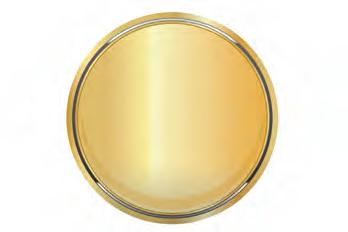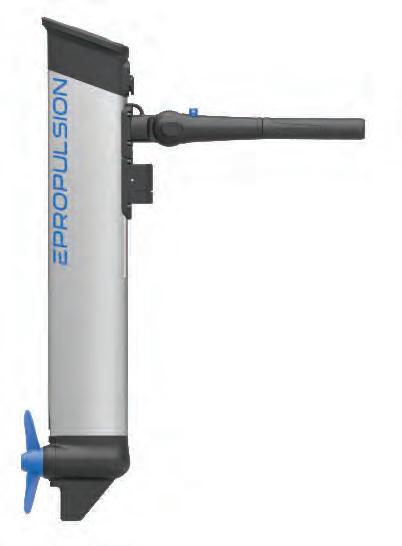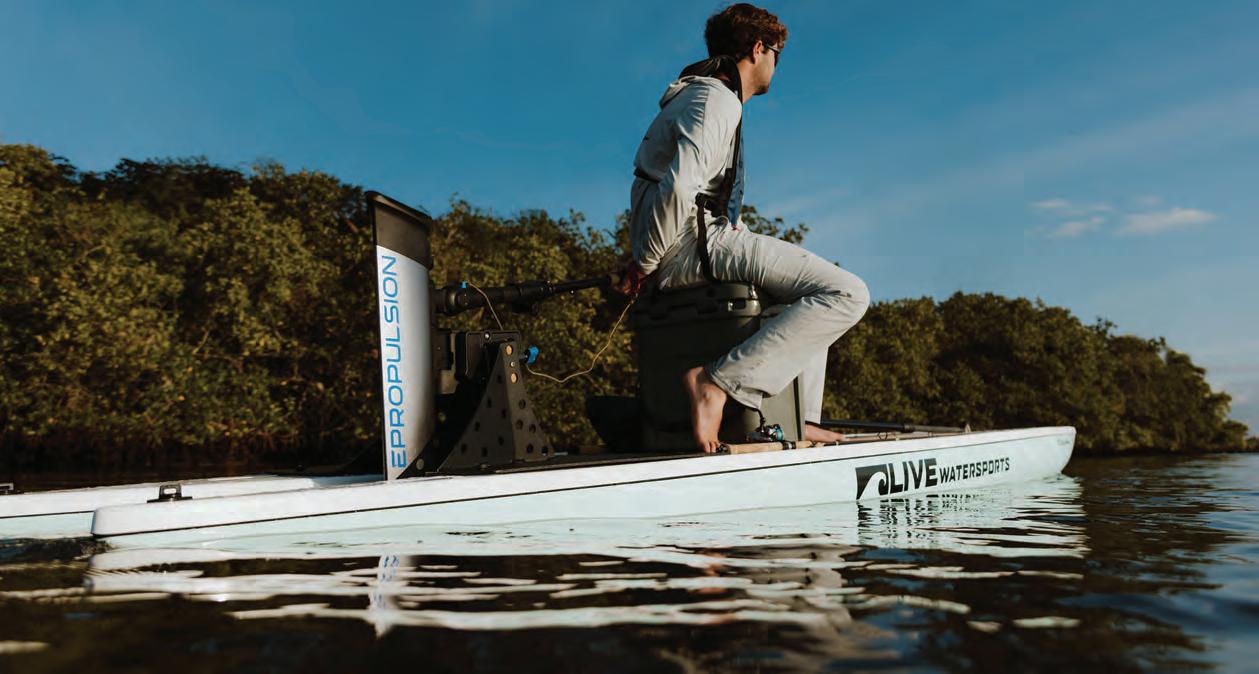





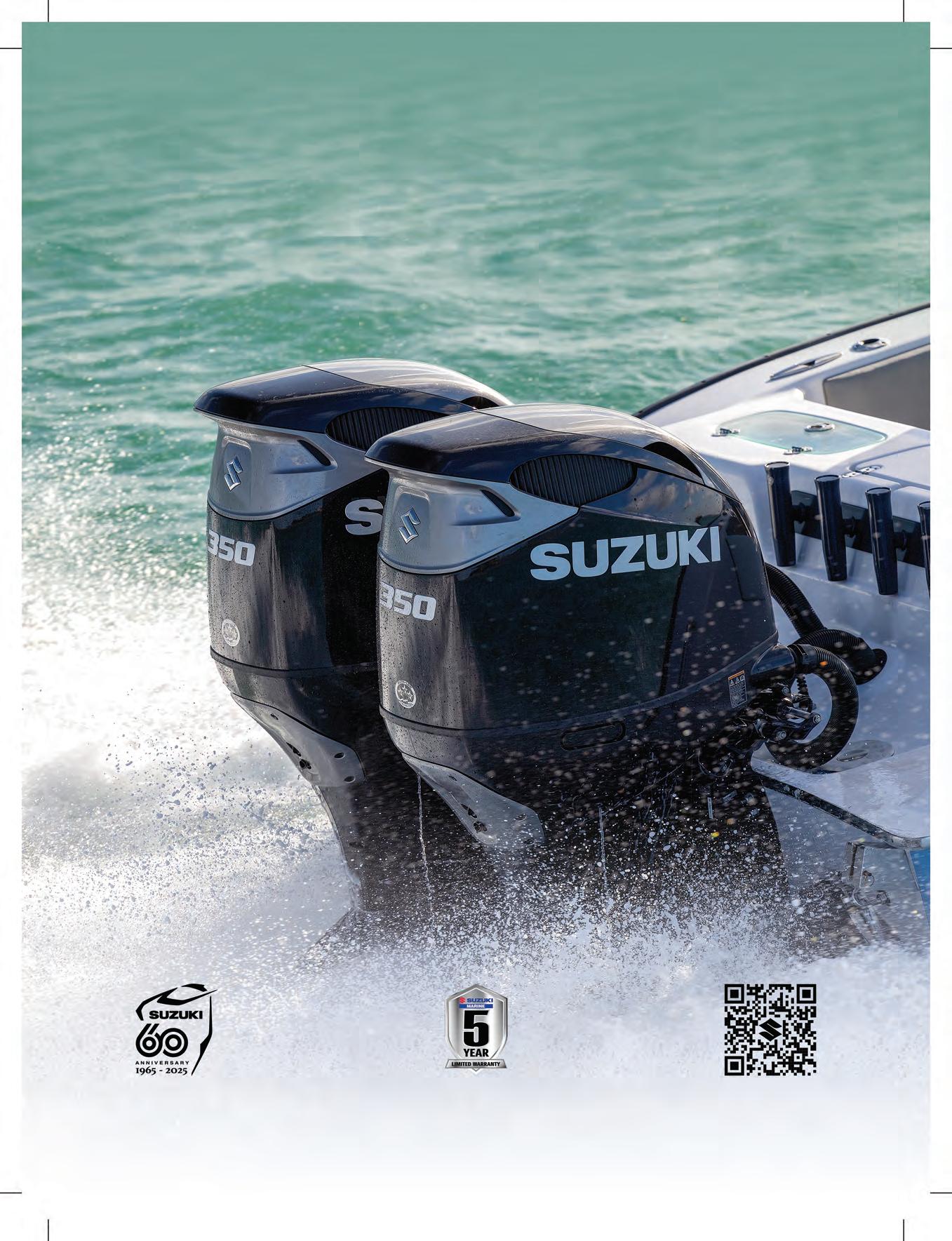


You’re looking at it! Furuno’s award-winning Radar gives you clarity & target separation like no one else. Don’t take our word for it. See for yourself. Scan here, and we’ll show you!





















You’re looking at it! Furuno’s award-winning Radar gives you clarity & target separation like no one else. Don’t take our word for it. See for yourself. Scan here, and we’ll show you!











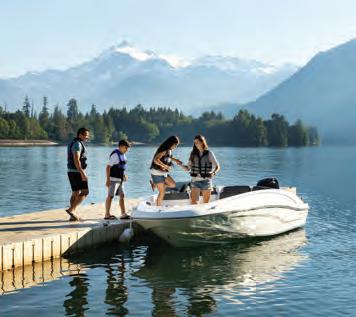






Embarking on the open water is an exhilarating experience, flled with the promise of adventure and relaxation. Whether you’re a seasoned sailor or a weekend cruiser, protecting your vessel with proper insurance is not just a choice—it’s a necessity. Explore the reasons why every boat owner should prioritize boat insurance for a worry-free voyage.
The open water can be unpredictable, with unexpected storms, collisions, or other potential accidents. Boat insurance can give you fnancial protection if there is damage to your vessel, providing coverage for repairs or replacement.
Accidents on the water can result in damage to other boats, docks, or even injuries to passengers. Boat insurance offers liability coverage, which can pay for damages or injuries you’re liable for while boating, up to specifed limits, and lawsuit costs if you’re sued. This includes damage you cause to another watercraft or if someone on or near your boat is injured and you’re found to be legally responsible.
Unfortunately, boat theft and vandalism are realities that boat owners face. Boat insurance has comprehensive and collision coverage that can protect you against events outside of your control, including theft and vandalism.
Accidents on the water may lead to injuries for you or your passengers. Boat insurance offers a range of optional medical payments coverage limits, helping to cover medical expenses if you are in an accident or someone is hurt on your boat, regardless of fault.
If you fnanced the purchase of your boat, most lenders require insurance coverage to protect their investment. Having boat insurance not only fulflls these requirements but also gives you peace of mind knowing that your fnancial interests are safeguarded.


Some water municipalities and marinas may require proof of insurance for docking or accessing certain areas. Boat insurance allows you the fexibility to explore different destinations without worrying about entry restrictions.
Emergency towing and assistance
Progressive boat insurance can include optional Sign & Glide® On-Water Towing coverage. If your boat is disabled or breaks down on the water, Sign & Glide® pays for on-water towing, jump starts, soft un-groundings, and fuel delivery.
Wreckage removal
If your boat sinks, Progressive boat insurance will cover the cost of removing your boat from the water (if removal is legally required).
Investing in boat insurance is not just about protecting a valuable asset; it’s about safeguarding the memories, experiences, and joy that come with your on-water adventures. Don’t let unforeseen circumstances disrupt your journey—navigate with confdence, knowing that Progressive boat insurance has you covered. Ensure a smooth and worry-free voyage, because when it comes to your boat, peace of mind is the ultimate luxury.
Scan to get a quote in as little as 4 minutes
learn more.




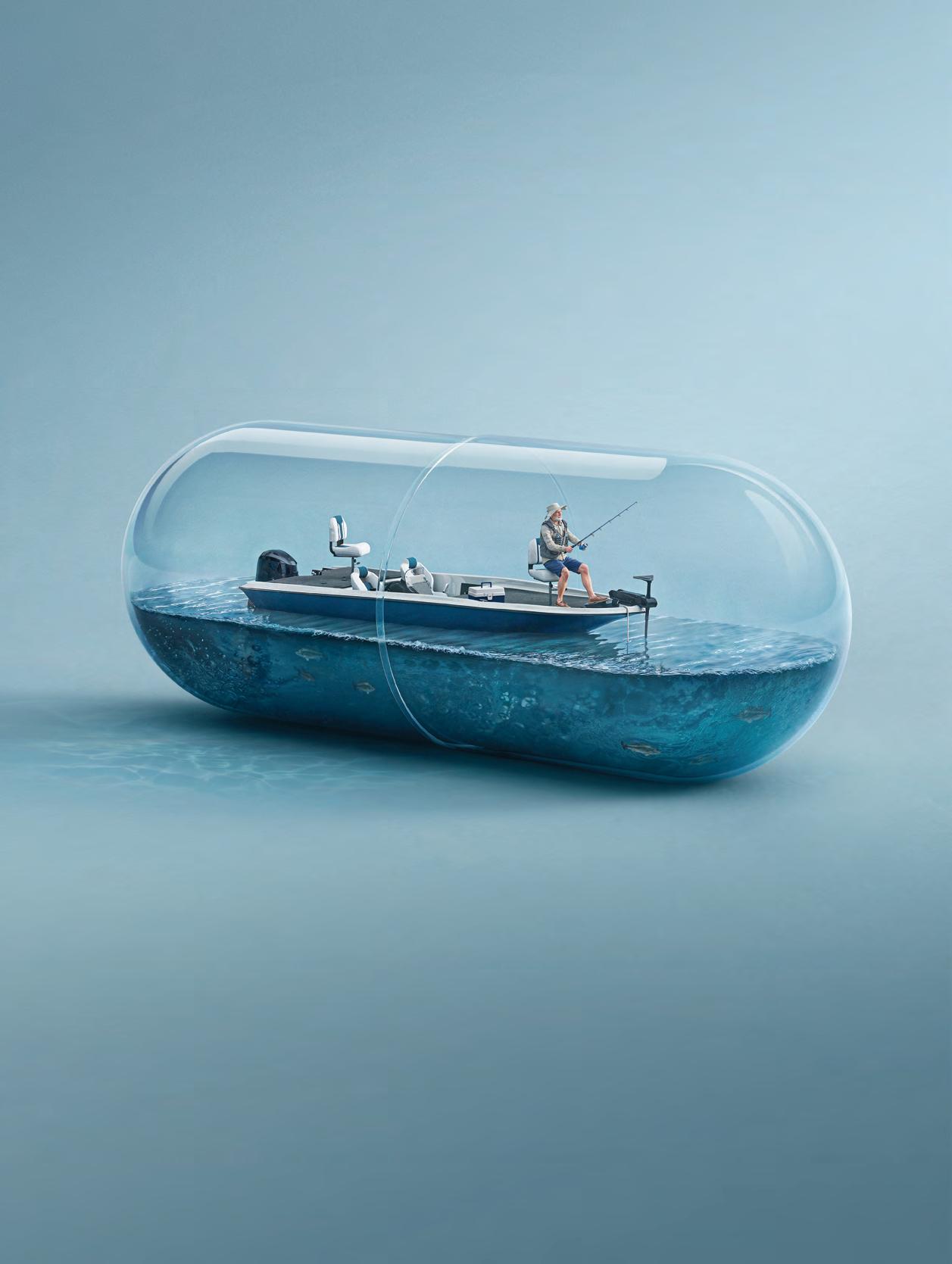
















Nestled in the scenic Blue Ridge Mountains of North Georgia against a backdrop of forests and river banks, the bustling Bavarian alpine village of Helen o!ers a wealth of shing opportunities for anglers of all skill levels.
By Unicoi Out tters
Trout shing is a highlight in the Helen area, with rainbow, brown, and brook trout abundant in local waters. Anglers can explore various shing experiences:
• High-Elevation Wild Trout: Tackle small creek wild trout in the serene mountain streams.
• Stocked Streams: Fish in streams replenished by the Georgia Wildlife Resources Division, o!ering both catch-and-keep and catch-andrelease options.
• Smithgall Woods State Park: Reserve a spot to pursue trophy trout in this pristine park.
• Private Water Access: Book guided or unguided trips on exclusive sections of the Chattahoochee and Soque Rivers.
#e optimal trout shing seasons are spring (March-May) and fall (October-November), with cooler water temperatures and comfortable
air conditions. Winter shing is also rewarding for those prepared for colder conditions.
For bass enthusiasts, the Helen area o!ers diverse shing experiences:
• River Fishing: Target native shoal bass, spotted bass, redbreast sun sh, and bluegill in the Chattahoochee and Chestatee rivers.
• Lake Fishing: Explore lakes like Burton, Seed, Rabun, Chatuge, and Lanier for largemouth bass, spotted bass, and sun sh species.
#e Helen, GA region is also home to three species of native redeye bass: Chattahoochee, Bartram’s, and Coosa bass. #ese colorful and spirited sh are best targeted from April to September. Anglers can pursue these species as part of the Georgia Bass Slam.
And, worth noting, Helen is an excellent destination for family shing adventures:
• Unicoi State Park: O!ers opportunities for

kids to trout sh in Smith Creek, bream sh in the lake, and enjoy activities like hiking to Anna Ruby Falls, zip-lining, kayaking, paddle-boating, and archery.
• Lake Burton Trout Hatchery: A short drive from Helen, this hatchery allows visitors to sh for stocked trout at Moccasin Creek State Park, explore wild trout streams upstream, bream sh at the lake shoreline, and hike to Hemlock Falls.
Whether you’re an experienced angler or a beginner, Helen, GA o!ers a diverse range of shing experiences and is a worthy destination to add to your bucket list.
Unicoi Out tters, established in 1994, is the Helen, Ga area’s premier y shop and guide service, providing expert guidance and quality gear to enhance your shing experience. Visit unicoiout tters.com to learn more about available trips, gear, and to book your next shing excursion. To learn more about Helen, GA, visit helenga.org.



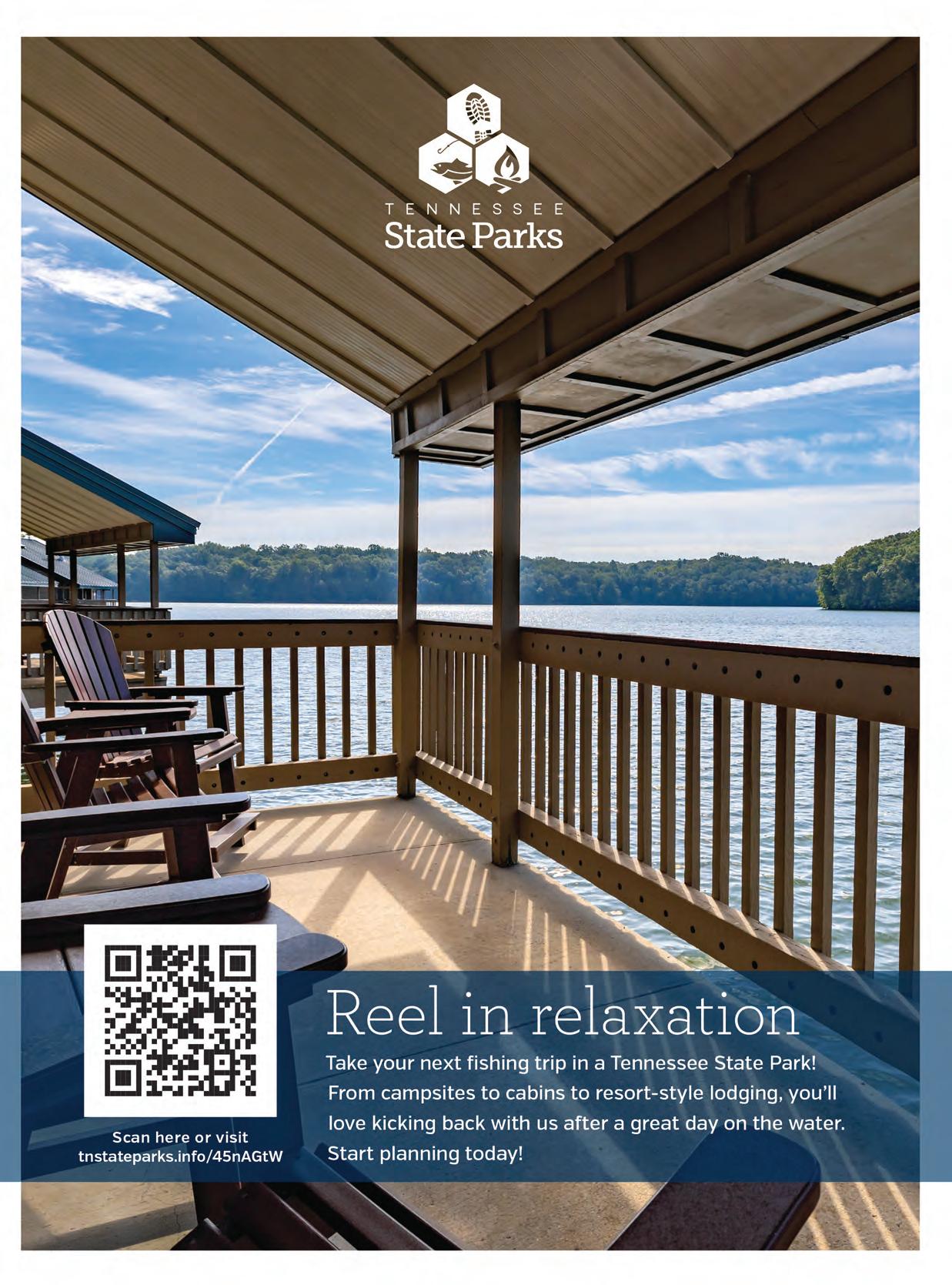


By Ben Martin, Editor in Chief

Chimney Rock Village, North Carolina was decimated by last year’s rare hurricane surge in the Rocky Broad River. Decimated. All ve of the village’s bridges, 30 percent of the small businesses, most of Main Street to Bat Cave, the village’s two campgrounds, over 35 RVs, and over 30 homes were washed away. With only one road in or out of Chimney Rock, no power, no public services and winter coming on, this little mountain village of 125 residents banded together to help each other. #ey immediately rolled up their sleeves and began the process of survival and renewal.
Always one of this writer’s favorite trout streams, Chimney Rock Village and it’s meandering Rocky Broad River was an annual sojourn for me and many anglers throughout the country.
I recently visited Chimney Rock and had the opportunity (privilege) to speak with the town’s mayor, Peter O’Leary, about the village’s reconstruction e!ort and how truly self-reliant these mountain folk are. According to Mr. O’Leary, volunteer groups like Spokes of Hope and the 101st Airborne showed up with much needed supplies and the Chimney Rock community, along with the volunteers, began the process of moving forward; volunteers like Shane Zoccole, Barbara Meliski, Joe from Wyoming, the whole Spokes of Hope crew immediately started pitching in.
#e river has taken a somewhat di!erent route through Chimney Rock. Some say its course now resembles its course from the mid 1800s when residents rst began settling the Hickory Nut Gorge. Today, crews are hard at work everywhere you look, roads are in and the future looks bright for a return to a new form of reality for both the residents as well as visitors. And while the course of the river has morphed, the sh haven’t gone anywhere, and while the riverfront buildings will invariably change, the beauty of the

mountains and the serenity and superior trout shing of the Rocky Broad River, along with the spirit of the residents will likely never be diminished. For that we wholeheartedly embrace the moniker of “Mountain Strong” for everyone involved in this heartfelt e!ort to reclaim and restore this beautiful mountain village.
Whether you’re chasing trophy fish or charting your next offshore course, your time on the water deserves the best in navigation and marine technology. Defender brings you UNBEATABLE PRICES and EXPERT SUPPORT on Lowrance and Simrad electronics—trusted by professionals and weekend warriors alike.

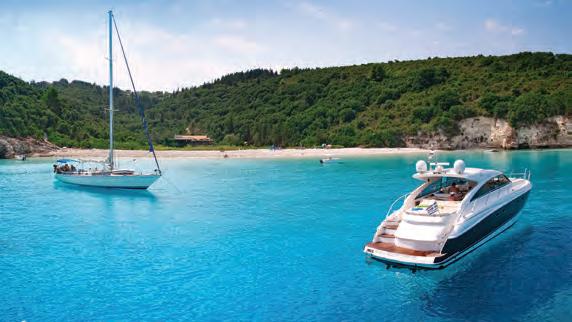
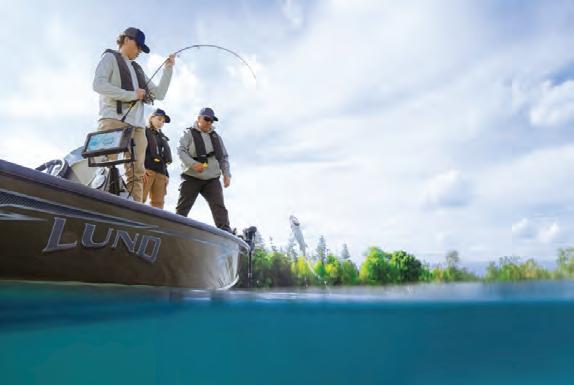




during the initial feeding frenzy.
If you have outriggers, trolling 4 lines is pretty straightforward. If your riggers have dual clips, the highest set clip will hold your longer lines. If you only have single clips, use them for longer lines with rigged ballyhoo, and run two chuggers from the gunnels, set closer to the boat.
If you dont have outriggers, you can use shorter rods or bent-butts for short lines near the back of the boat, and run two longer lines from taller trolling rods, set behind them midship, or just keep it simple and run two or three lines. #e most important rule of setting a spread is that lures that dive deeper should be set as shorter lines, running closest to the boat, while lures that skip the surface will be your longest set lines. #is gives you the ability to turn the boat without risking tangles. If your short chuggers are exactly the same, they can be run at identical lengths, otherwise, stagger them appropriately according to their weight and depth they run through the water.
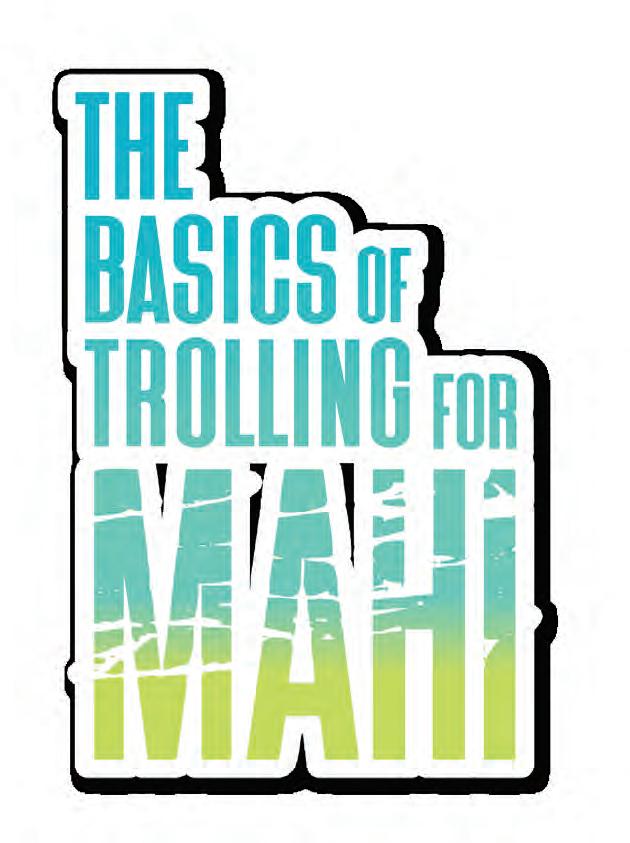
By Capt. Quinlyn Haddon
or new boat owners with a vessel and captain capable of getting o!shore, targeting mahi is a great choice for rst-timers who are wanting to push into the o!shore shery.
Mahi shing doesn’t require any predetermined coordinates, and anyone can head out there and nd them. Depending on your location and time of year, you can start looking for signs of life as shallow as 100’. #is time of year in the Florida Keys, you may have your best luck past 500’.
As you make your way o!shore, your hunt begins immediately. Your head should be on a swivel, scouring near and far for the telltale signs of mahi activity. Current edges, weedlines, debris, baitsprays, and diving birds found within the
desired depths, are all worth checking out.
When you have found one of these potential mahi zones, you will initially troll the area, and then move into casting at the school once you have hooked up to a sh.
Depending on your boat’s set-up, you can get the job done trolling 2-5 lines. It really isn’t necessary to go overboard with a mahi spread as they have a tendency to tangle lines, and a majority of your catching will be done a$er you have hooked up to a single sh. Once you have hooked up on the troll, you will have to clear all the other lines to prepare for casting at the school. If you have too many lines to clear, you may miss your opportunity for multiple hookups
If you want to run a $h line down the center, you can choose a long line that increases your chances of catching tuna. #is rod should be placed up high on the center of the boat in the rocket launcher and should have a very light lure that skips the surface. Alternatively, you can run it short from the transom, with a lure that dives deeper and increase your chances of catching wahoo.
If you opt for the short $h line, be aware that running anything with treble hooks is not recommended for targeting mahi. Not only do ip like rabid snakes when in the boat, but as they jump and shake when hooked, they can send that lure %ying back at you if they are successful in freeing themselves. Choose a wahoo lure with single hooks if you are running this type of spread.
If you go with a long line as your $h line, be mindful that you will likely catch more weeds this way. #is is a better option in open water while trolling under birds rather than weedlines. It also makes cult to make tighter maneuvers. Always make wide turns, and speed up through them to keep the lines tight and maintaining the lure’s action.
Once you’ve hooked into a mahi, slow the boat but keep it in gear while you clear the other trolling lines. Bring the hooked sh close to the boat, but leave it swimming in the water as it will act like a chumbag to bring his buddies up to casting range. Grab your spinning rods with 50-80# leader and an 8/0 j hook, toss on a live or chunk of bait and cast out behind the hooked sh. Let back, occasionally stopping the line with your nger and giving it a little twitch and then continuing to free-line it back. When you get a bite, give the sh a few seconds to eat awnd then close your bail and reel. Once you have all your rods hooked up with sh, start taking them into the boat one at a time and casting back into the school, holding multiple hooked sh in the water as you start rotating them out.
If you aren’t quite ready to go solo yet, give Sweet E’nuf Charters a call to book a mahi catching trip and we’ll teach you everything you need to know to make the mahi fear you.
Happy hunting!
Capt. Quinlyn Haddon guides with Sweet E’Nuf Charters out of Marathon, e Florida Keys. (504) 920-6342. www.captainquinlyn.com; IG: @captainquinlyn

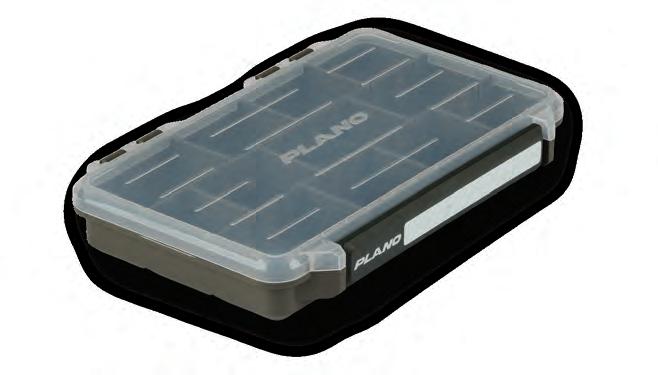










It’s no fsh tale when you run with a John Deere. You can get everything done faster and easier, so you get more time on the water. Plus, our special offers make them the catch of the day.




The National Oceanic and Atmospheric Administration (NOAA) Fisheries has announced a short recreational season of just two days for 2025 for red snapper in the South Atlantic. Red snapper harvest will be open for recreational anglers in the South Atlantic, from North Carolina through Florida, July 11 and 12. !e limit is one sh per angler.
Dates are subject to change in case a small cra weather advisory is projected. Any change in the date of the recreational season will be announced in the Federal Register, Fishery Bulletin, and an announcement via NOAA Weather Radio.
NOAA Fisheries also withdrew the proposed bottom shing closure from Amendment 59 to the Fishery Management Plan for the SnapperGrouper Fishery of the South Atlantic.
Amendment 59, introduced in January of this year, proposed a 3-month bottom shing closure for 55 species of reef sh in Northeast and Central Florida each year. Comprising federal waters from the Florida/Georgia border to Southern Brevard County, the closure would have had devastating

impacts on the sport shing industry and coastal communities that rely on angling tourism dollars.
!e American Sport shing Association (ASA) applauds the elimination of the proposed closure. “We are encouraged to see NOAA reconsider and withdraw the $awed bottom shing closure,” said Martha Guyas, Southeast Fisheries Policy Director for ASA. “With more than 5 million anglers taking to the water each year in our state, recreational shing contributes $11.1 billion to the Florida economy and supports more than 70,000 jobs. !is haphazard proposal would have gutted the industry without any sound scienti c justi cation.”
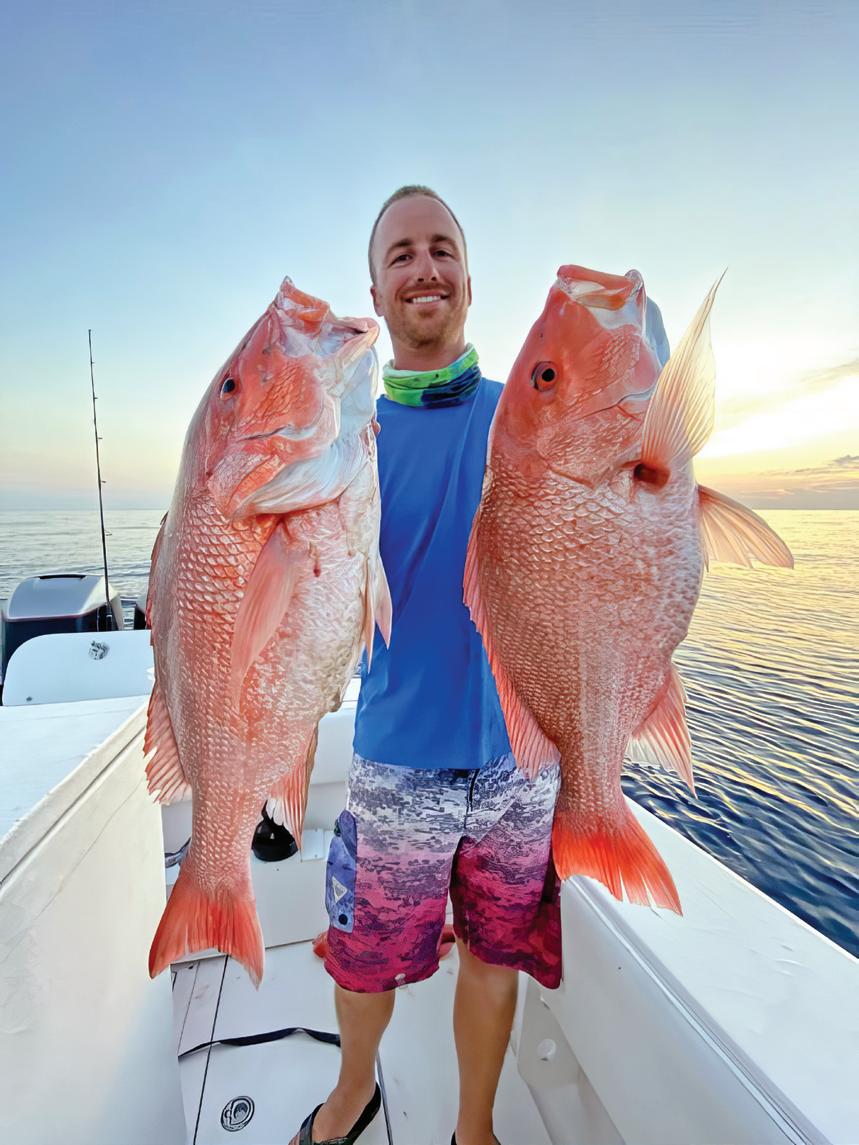
Moving forward, continued e orts to improve data collection and management are necessary to assist in providing more reasonable access. !e South Atlantic Great Red Snapper Count is underway and is expected to be completed later this summer.
ASA led a joint letter earlier this year in which 76 members of the recreational shing industry from dozens of states expressed their opposition to the area closures included in the Amendment. NOAA Fisheries also held multiple in-person hearings and received extensive comments during the public comment period, most of which opposed all or part of the proposal.
Unfortunately, Amendment 59 still maintains an unacceptably short recreational season of just two days for 2025. Although there was widespread grumbling and gnashing of teeth by recreational anglers, it did not come as a surprise to pretty much anyone.


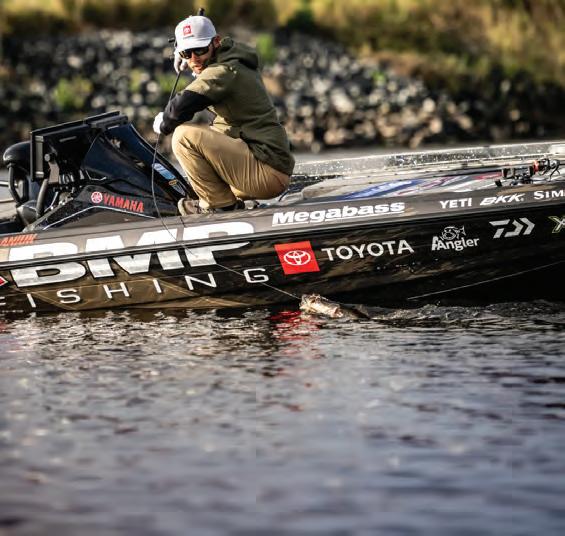
By Don Norton
If you’ve never been to Lake Okeechobee, it’s like shing in an ocean. With a surface area of 730 square miles, 135 miles of shoreline, and a length of 35 miles, it can be a bit humbling even to the top professionals who sh tournaments there. Hot spots abound. At one time or another, throughout the calendar year, virtually everywhere on the lake is a good shing area.
!e lake’s water levels uctuate 3-5 feet per year. !e normal water level in the winter ranges from 14 to 16 feet above sea level, and the normal water level in the summer months ranges from 12 to 15 feet.
As I write this article in mid-May, the water level is 11.17 feet above sea
level, unusually low for this time of year, creating many navigational hazards. It is expected to go even lower before the rainy season hits South Florida. What’s a sherman to do? !e lake becomes dangerous at this depth, and many of the best spots can be hard to get to.
Like many other anglers, I found the answer years ago.
!e Kissimmee River originally owed over 100 miles from Lake Kissimmee to Lake Okeechobee. !e waterway, part of the Everglades headwaters, was straightened and channelized into a 56-mile-long canal called the C-38 Canal in the 1960s for ood control. Restoration e$orts are underway to restore the river to its original meandering state and revitalize the ecosystem. !e depth of the river as it enters Lake Okeechobee ranges between 25 and 30 feet deep, o$ering an excellent opportunity for anglers to catch bass, crappies and bluegills. Other parts of the river can be as deep as 45 feet.
But it o$ers some excellent bass shing. Just ask Greg DiPalma, Brandon Palaniuk, Will Davis Jr., or Timothy Dube, four professionals who shed the 2025 BassMaster Elite Tournament on Lake Okeechobee earlier this year.
On Day One, shing in a small stretch of the C-41A Canal that ows southeast from Lake Istokpoga, DiPalma weighed in 29.12, Davis Jr., 26.2, Palaniuk 23.7, and Dube had 23.7. !e foursome was in rst, second, third, and 10th, respectively.
On Day Two, Palaniuk put two 8-pounders in the boat on consecutive casts, weighing in 34.10 for the day. He went on to win the tournament with a staggering 95.4 pounds, all caught in the Kissimmee River.
!is wasn’t the rst time an Elite series tournament on Lake Okeechobee was won on the Kissimmee River. Tyler Rivet won the event in 2023 a er nding an underutilized area of hard bottom spots, similar to the area Palaniuk and the others shed.
As Buck Perry used to say, “!e Home of the bass is deep water.” More and more anglers are proving that to be true.
Most of the locals will tell you, don’t overlook the river. As good as Lake Okeechobee is, the key in low water conditions, as well as other times of the year, is the Kissimmee River.
Don Norton is Co-Publisher of Coastal Angler Magazine’s Okeechobee edition. Contact him at (863) 273-4998 or don@theanglermagazine.com.
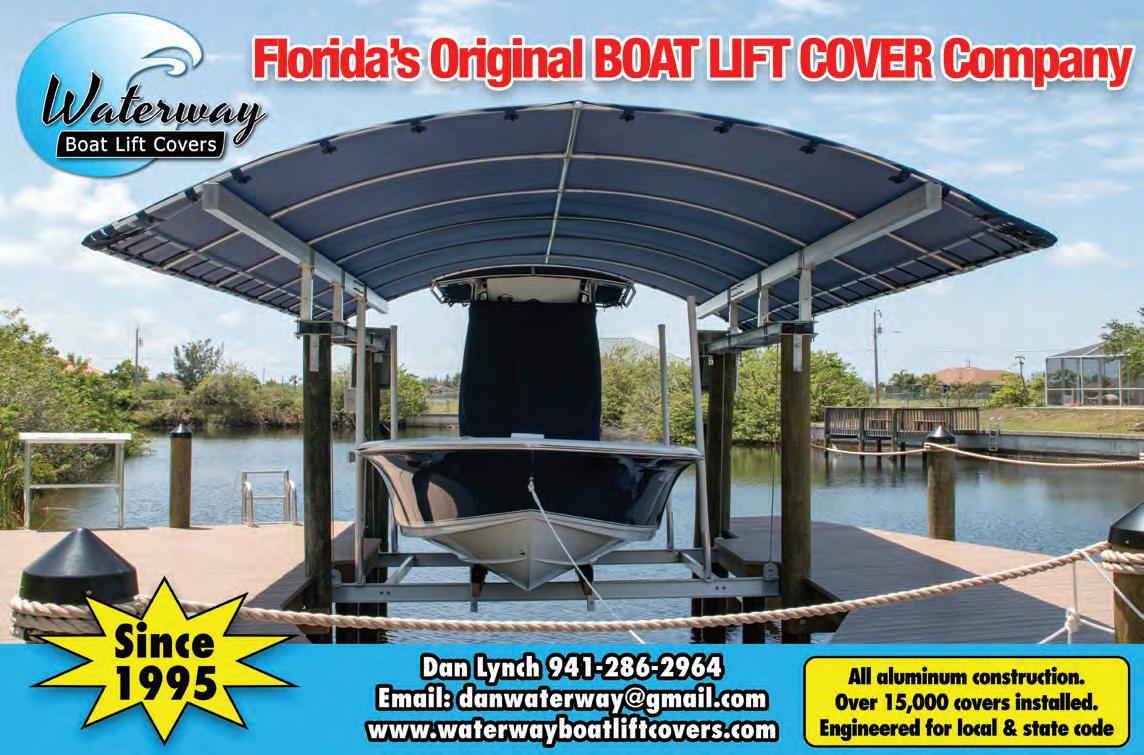


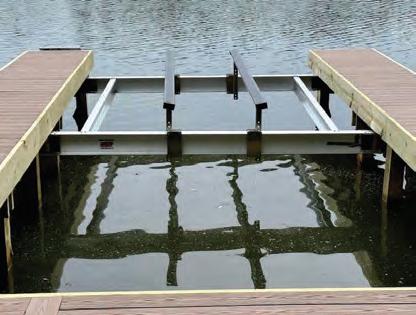
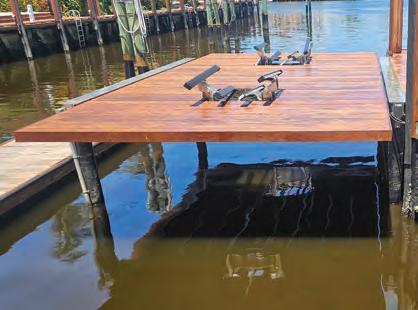
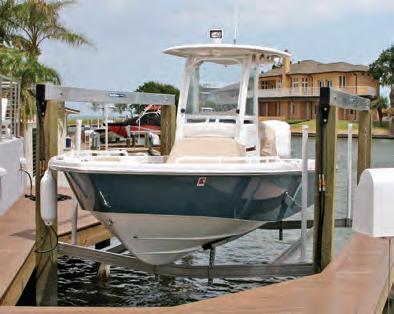


ShoreStation hydraulic boat lifts are a reliable choice for coastal residents and boating enthusiasts alike. Their strong construction, made with corrosion-resistant materials, allows them to withstand harsh environmental conditions, including sun, storms, and saltwater damage. ShoreStation provides a steadfast solution for protecting waterfront investments, o ering peace of mind to owners in the Sunshine State.
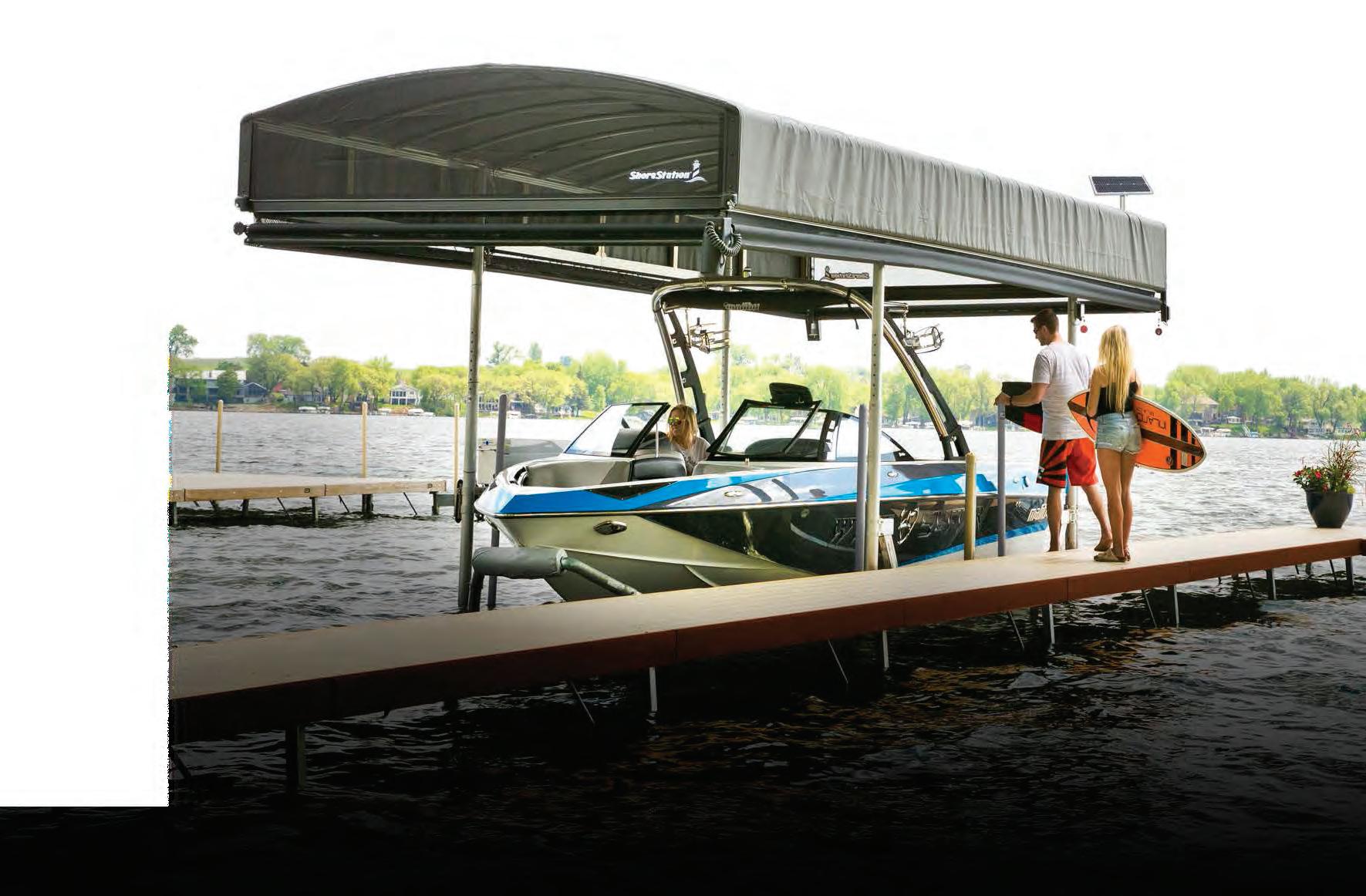

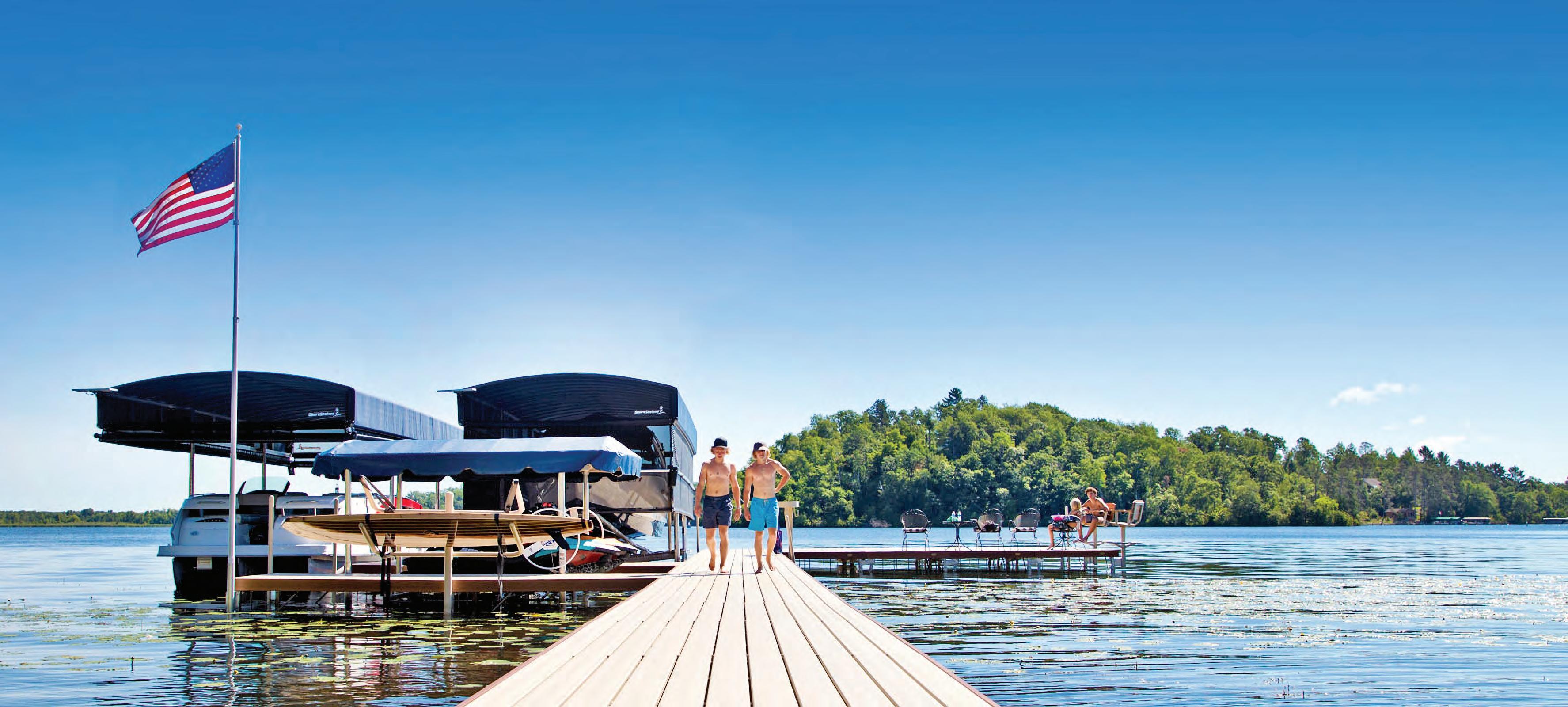





Equipped with exceptional weather resistant fabric and breathable SunTex 80 woven mesh ends for maximum protection and durability,

Made from the highest quality materials, our innovative hydraulic boat lift is one of the fastest and safest lifts on the market today. When you have a hydraulic lift, there’s no need to worry about wind and waves getting in your way. This lift will give you con dence to safely land and secure your boat in less-than-ideal conditions.
Never miss another moment on the water. Power your lift with clean, free solar power. Our speedy 20 watt charger features solar regulator drainage protection, saving your battery from permanent damage caused by overcharging.



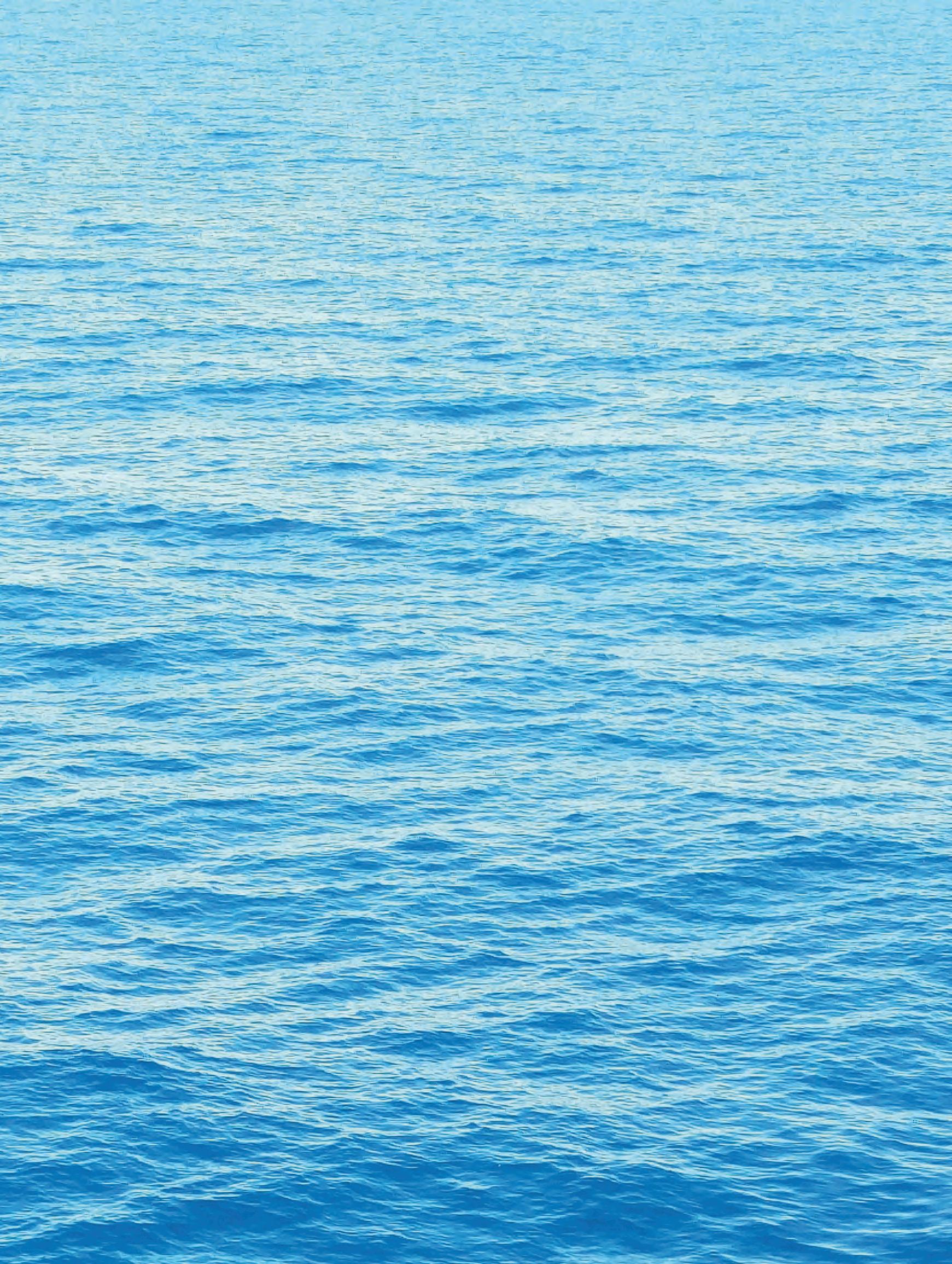


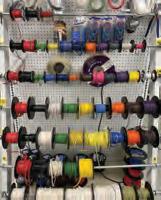








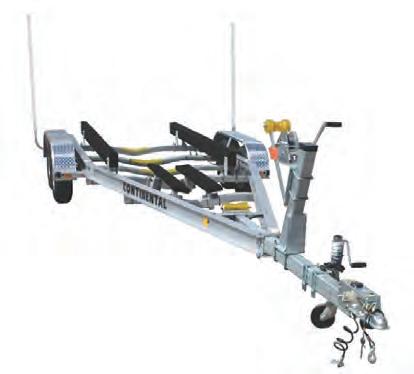








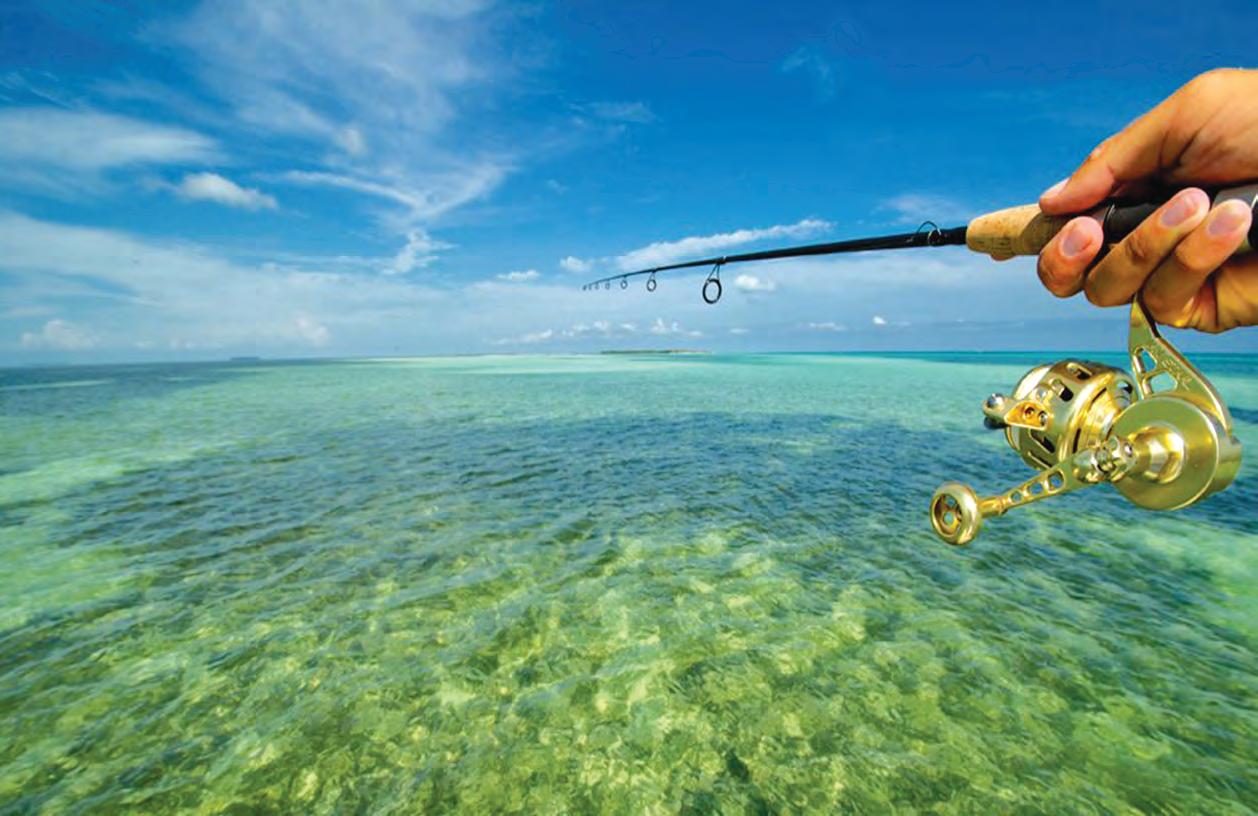
By: Capt. Greg Poland
It’s Summertime and it’s hot out on the water, and my advice is to get out early and get back before noon, so you can jump in the pool and take a siesta! We have been leaving the dock at 6 am and fishing a 1/2 or 3/4 day charters, following the directions above. I can’t tell you how happy I am to have a T-Top on my Contender Bay Boat! For the last 30 years, I didn’t have a top or had a bimini top that I just didn’t put up enough. Whether you plan to head offshore early in the morning to catch mahi, or into the Backcountry for some snook and juvenile tarpon along the shorelines, have some live bait with you, and get out that Ballyhoop or Sadiki rig and fill up the live well. If live bait is not an option and you are headed out for mahi, I have been having good luck with squid, which is available in the freezers at any marina or tackle shop. I also link a smaller size trolling lure, which can be dragged through the grass to trigger a bite from the fish under those weed lines.

the smaller non-tower boats. Once we find the birds, I like to deploy the trolling lure so it’s out fishing while we look for the mahi. Once located, cast a spinning rod with a squid or that live bait you spent time catching out in front of the fish and hold on tight. Once you have a fish on the line, bring him close but leave him in the water to keep the school around and break out the fly rod or light spinners and have some fun catching them. If you’re lucky, you can catch and release lots of fish and take a few of the larger ones for dinner.
If the backcountry is where you’re headed this time of year, my bait of choice is a pinfish or a jighead and a soft plastic which are both on board my boat. I like to get casting right along the shoreline with the soft plastic while the pinfish is on a knocker rig, swimming around under a shoreline or on the point of the island. You will catch everything from a goliath grouper to a snook, and if you see a tarpon roll, cast up current and hold on. Have fun out there and if you’re looking to get out on the water, my contact info is below!
On my boat, I like to put one of each out after locating floating debris or a weed line, and make sure to keep an eye in the sky for birds, as they will lead you to the fish. Binoculars come in handy, especially for us guys in
By: Capt. Angelia Swanson
It’s an exciting time of year for us in the Florida Keys when the mahi mahi show up. The last few years of mahi fishing have been unusually hard in the Keys. Mahi tournaments start as early as March and the first of the season tournaments have had eight and nine pound fish winning lately, whereas we used to see thirty and forty pound fish winning. The larger mahi, if at all, have only moved in later in the season the last two years. Some people blame it on long liner fishermen from Mexico, but whatever the reason, the mahi have not been as prolific or as large as in past years. I even had a day last year where we must have caught twenty mahi, but all were a half of an inch too small.

Finally, this year started out with a bang! We started catching them nice and early this year, and by May we had them coming in nice and big. Fifteen plus pounders were being unloaded off of all of the boats which makes for exciting times on the dock. Mahi mahi, also called dolphin fish have absolutely no relation to our porpoises that are marine mammals, are extraordinary acrobats and fighters.
When you have one of these amazing fish on the line, they will run and do aerial maneuvers like no other. They also may be the most beautiful fish due to their amazing colors with awesome hues of green, blue, and I’ve even seen purple, against a golden body. Those colors will fade extremely quick-
ly once they hit the deck, so take your pictures fast! They are also highly migratory, preferring warm tropical and subtropical waters. And maybe the most interesting fact is that they are the fastest growing fish in our oceans. They are known to grow 1.3 to 2.7 inches per week and in a single year they can get up to four feet long and forty pounds. Fishing techniques vary widely for mahi. I have always had good luck trolling for them.
I also have had luck pitching live bait under weed and debris patches. But mahi fishing can be successful deep sea fishing, near shore fishing, and inshore fish ing, so there are many schools of thought on the best techniques to use. Another tip is to leave one fish hooked, boatside, in the water. More fish will follow behind the one hooked, so have your pitch rods ready. After you catch that elusive mahi, dinner is up next, and it makes the best table fare. With soft, flaky, mild, white meat, it can be cooked almost any way you prefer, just don’t overcook it, as with all fish. If you don’t feel like cooking after a long day on the water, take your fish to one of many of our local “hook and cook” restaurants and have them prepare it for you. If you’re looking to go mahi fishing this year in the Keys, give me a call and let’s go catch ‘em up!

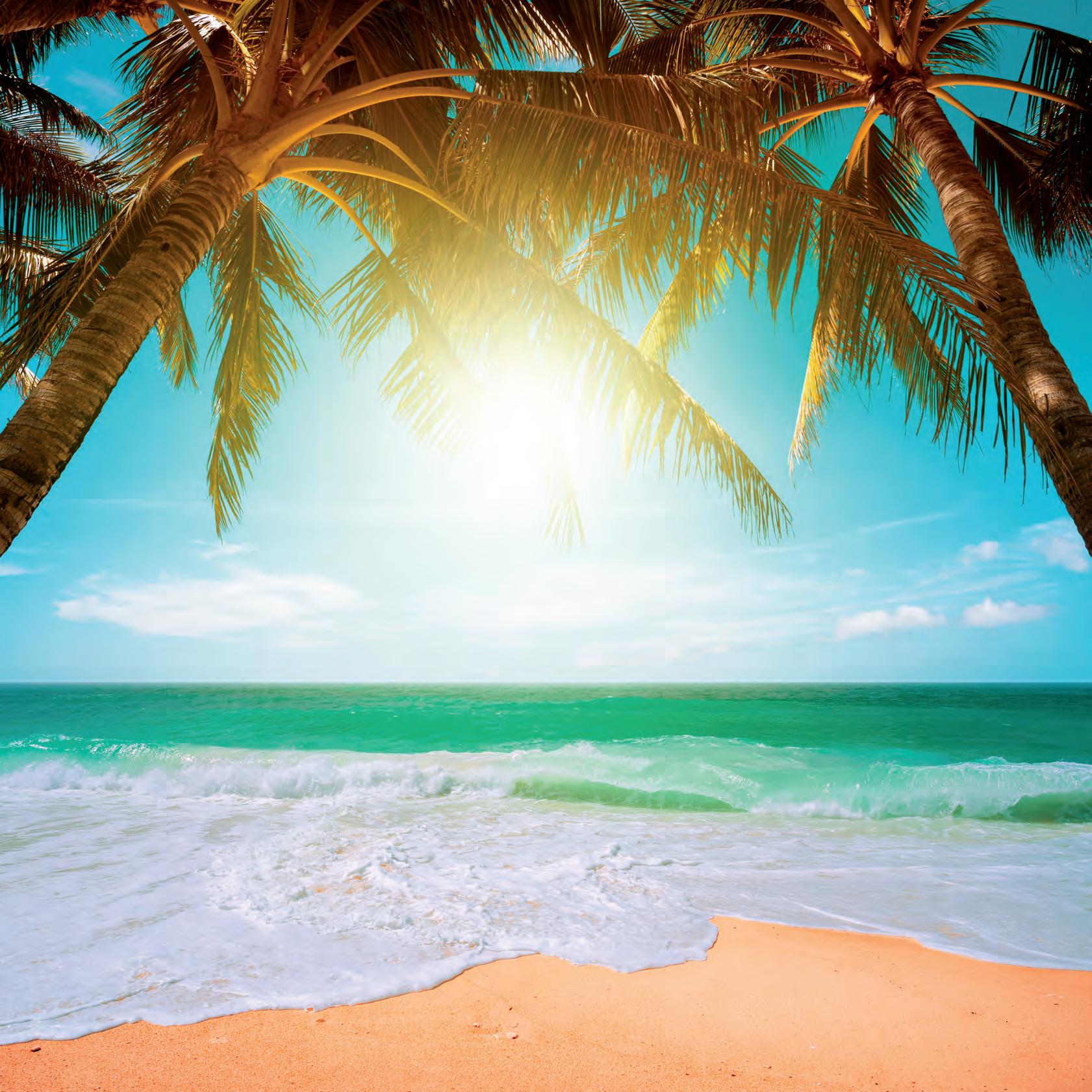





By: Capt. Bruce Andersen
July is one of the most exciting months of the year for offshore fishing in the Florida Keys. While the summer heat pushes many folks indoors, one of the best ways to beat the heat is to head offshore into the Gulf Stream. It’s definitely cooler out there than back on land, and the fishing is red-hot.
This time of year, mahi-mahi (dolphin fish) are the stars of the show. These brightly colored, hard-fighting fish thrive in the warm summer gulf stream current and are found under floating debris, weed lines and working birds. They travel in schools, and once you hook one, it’s game on—there are usually more nearby. Mahi fishing usually involves trolling, but once we locate the fish, we usually switch to light spinning tackle making them a blast for anglers of all skill levels.
Blackfin tuna, wahoo and billfish are also great offshore targets in July. Tuna often school near birds or offshore humps, where live baiting, trolling, or vertical jigging can produce fast action. wahoo or Billfish like blue marlin, white marlin, and sailfish can also be a surprise part of the catch on any given day when Fishing offshore.

Closer in, the reef fishing is outstanding this time of year, especially for mangrove snapper. These fish school up on the reefs during the summer spawn. With a little chum and light tackle, you can enjoy non-stop action. You’ll also find yellowtail snapper, known for their beautiful colors and tasty filets, as well as mutton snapper, a real prize for any reef angler.
On my charter boat, The Captain Easy, we’re always ready to chase down mahi, tuna, or wahoo offshore, or switch gears and fish the reef for snapper.
Whether you’re a seasoned angler or just looking to enjoy a fun day on the water, summertime fishing in the Florida Keys has something for everyone. I invite you to come out and experience it with me, or with any of the many professional guides here in the Florida Keys. There’s no better way to enjoy the season than on the water, catching fish, staying cool, and making memories.
— www.captaineasycharters.com | You can reach Captain Bruce Andersen at Capt. Easy Charters, MM 85, call 305.360.2120 or email at: captbrucekey@comcast.net

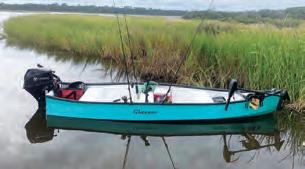



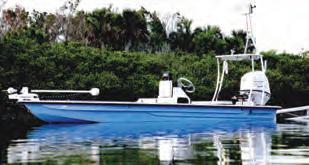









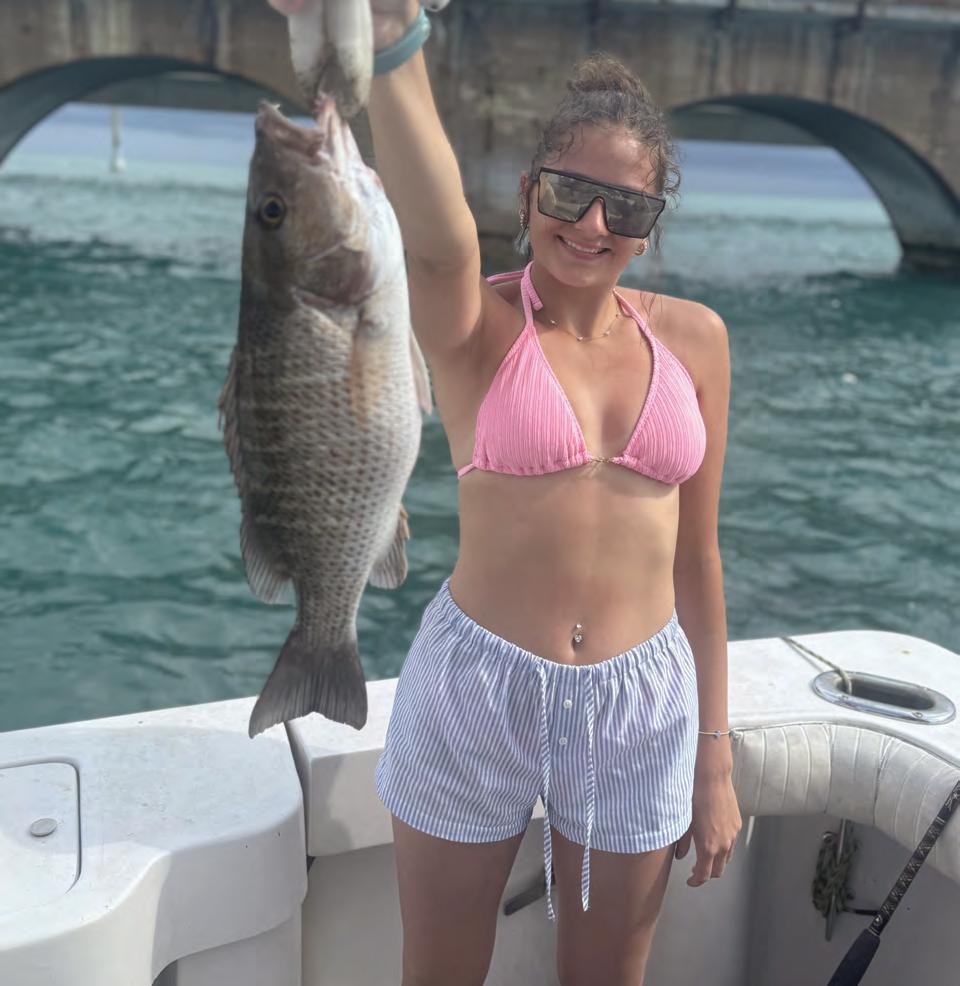
By: Capt. Joel Brandenburg
The snapper spawn in the Florida Keys can be the most exciting ref fishing of the year with the right location, techniques, and timing. You can expect to catch school size, yellow tails, oversized, mangrove snapper and trophy mutton’s. The Florida Keys can offer world class snapper fishing during the spawn. Just remember to keep up with local and state regulations to ensure the world’s largest living reef will keep our fishery thriving. We have to follow federal, state and local laws on snapper sizes and bag limits some of the regulations intertwine so it can get a little complicated. During the snapper spawn,






the snapper school up and become more aggressive. This time of the year is prime time for great snapper action. In the past some thought that targeting the spawn during the full moon and new moon was best because the spawning snapper fed better in the heaviest moving water. In recent years, however, marine biologists have proven that the reason the snapper are most active during the full and new moon is so the heavy moving water will carry their eggs further. Like many fish the snapper ball up so the female can lay her eggs and the male releases his sperm at the same time, fertilizing her eggs. During a flowing tide, the male’s sperm has a much better chance to connect with the female’s eggs. The spawn takes a lot of energy from the male and female, and because of this they breed and feed simultaneously. This spawning phenomenon typically happens from June through August. The mutton and mangrove snapper spawn happens in 70 to 120 foot of water on the reef ledges and wrecks. The yellowtail snapper spawn happens in 50 to 70 foot of water on the reef. A good fish/bottom finder is the best way to locate schooling spawning snapper. Below is the best ways to target each species.
*Mutton Snapper: We like to use egg, sinkers, or break away sinkers big enough to hold the bottom with a long monofilament fluorocarbon 30 to 50 pound test leader. Most avid Mutton snapper Angler will use a leader 10 to 20-foot-long or longer, we like to use 10 to 15-foot leader. We like to use 3.0 or 4.0 J Hooks tied with a loop knot rather than a fisherman’s knot so the Bait looks more natural on the hook. We prefer to use live bait such as pilchers, pinfish or ballyhoo. Spawning muttons feed best on sand next to structure.
*Mangrove Snapper: We fish mangroves a lot like mutton’s, however, we use smaller, sinkers, shorter leaders, smaller hooks, and lighter test line. We like to send a live bait down to the mangrove snapper, using either a knocker rig, carolina rig or chicken rig. Our live bait is even smaller for mangroves, small pinfish, tiny jig size ballyhoo, large live shrimp or razor belly pilchards.
*Yellowtail Snapper: Chum is the most important thing for catching spawning yellow tail snapper. Make sure your chum is always flowing out of your chum ring bag. Our favorite chum is green tournament chum. We use 3 foot of 12 to 15 pounds monofilament fluorocarbon leader with a small chartreuse colored larvae jig with a small piece of fresh shrimp or ballyhoo just big enough to hide the hook. We use a technique called flatlining where you’re letting the bait out at the same rate and speed as the current. Night fishing for spawning snapper can be the best. We offer day and night snapper trips out of Marathon!

— For a charter with Captain Joel Brandenburg of Ana Banana Fishing Company Marathon Florida Keys call 305– 395–4212 office# or 813–267–4401 Cell #. Or visit us in person at ponchos fuel dock a half block away from Cast Away restaurant at 1280 Oceanview Ave. Marathon Florida Keys.




8
9
6
5
2
1
20
21
23
24































































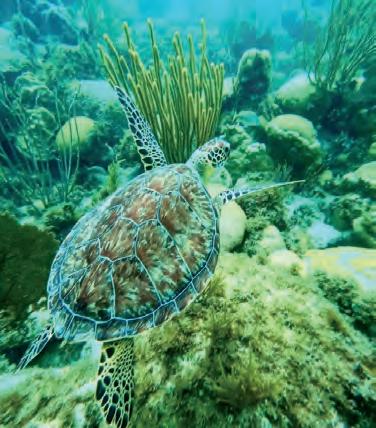
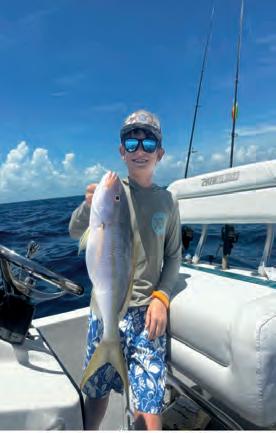
6
5
2
1






















21
22
23
26
27












Topographic Print Insulated Fish Bag w/drain plug, wrap around handles, 1” closed cell insulation ensures your catch will stay fresh and cold for hours. Available in the following sizes: 2’, 4’ and 6’



































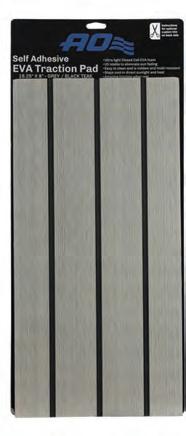
Provides a non-slip, cushioned, durable surface in both wet & dry conditions. High-density foam is stain-resistant & non-absorbent.
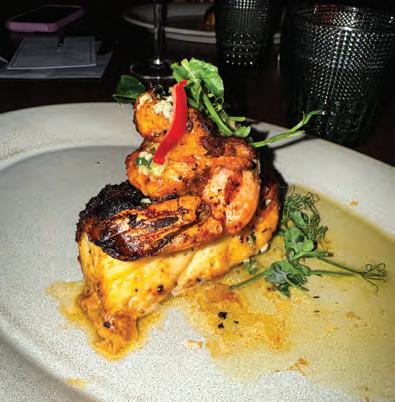
By A. deGruchy
Recently, I had the incredible opportunity to experience an unforgettable event at Three Waters Resort in Islamorada: Helm to Hearth. This unique culinary adventure brought world-renowned, award-winning chefs to the Florida Keys, not just to cook, but to fish alongside local captains and craft extraordinary meals throughout the weekend.
The event kicked off with the chefs heading out with captains from Three Waters Resort, catching a variety of fish, including large mutton snapper, yellowtail snappers, mangrove snappers, barracuda, sailfish, and more. That evening, participants were treated to a welcoming culinary reception featuring chargrilled oysters, shrimp tacos, and a standout fresh tuna cooked right on pink Himalayan salt rocks, an impressive and delicious display that set the tone for the weekend.
The highlight of the event was the next evening’s multi-course dinner, crafted with the weekend’s fresh catch and local ingredients. Chef Charles Trexel started things off with a bright and refreshing scallop crudo. Chef Brandon McGlamery followed with a spring-inspired fish course featuring cobia and seasonal vegetables. Chef Asif Syed brought bold flavors with a spice-crusted lamb chop served over a comforting mash. Chef Bryce Bonsack introduced a delicate handmade pasta filled with rich burrata, lobster, and fresh herbs. Chef Adrianne Calvo delivered a bold take on scampi featuring grouper in a spicy butter sauce. To close the night, Pastry Chef Heidi Kabath created a show-stopping dessert
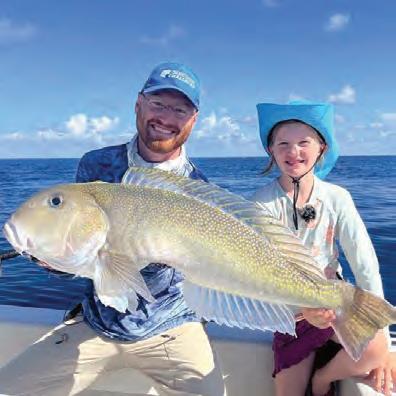
featuring strawberry, guava, almond, and white chocolate, a sweet ending that had everyone wanting more. Each course flowed seamlessly into the next, and the collaboration and energy among the chefs made it an experience unlike any other.

The final day featured a farewell brunch, where each chef contributed a signature dish. Highlights included fresh tuna, ceviche, crab cakes, and the freshest desserts I’ve ever tasted. Every dish was thoughtfully prepared and presented, wrapping up the weekend on a high note. Not only was Helm to Hearth a celebration of culinary excellence, but it also supported two outstanding causes, the Coral Restoration Foundation and the James Beard Foundation. Major props to Three Waters Resort in Islamorada for putting together such a top-notch, one-of-akind event that ties together culture, culinary arts, and the breathtaking beauty of the Florida Keys. Helm to Hearth will now be an annual event every April, and trust me, it’s absolutely not to be missed.
One of the standout chefs of the weekend was Islamorada Resort Collection’s own Executive Chef Charles Trexel, who leads the culinary concepts across the Collection’s three resort properties, including Kindler, widely regarded as the hottest, best restaurant in the Florida Keys. For more about the chefs and their stories, visit Three Waters Resort’s website and check out their “Helm to Hearth” feature!

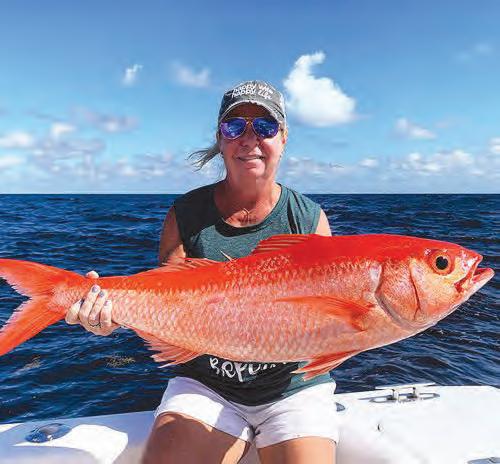

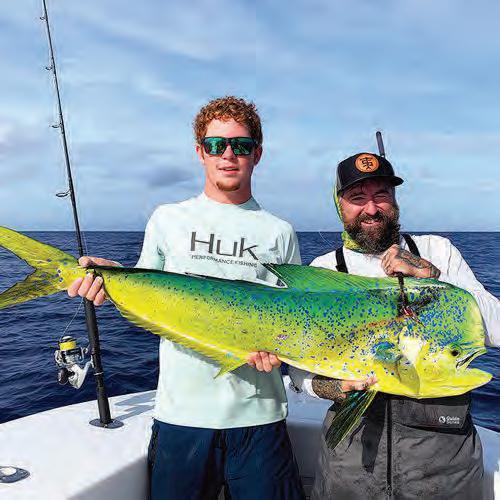

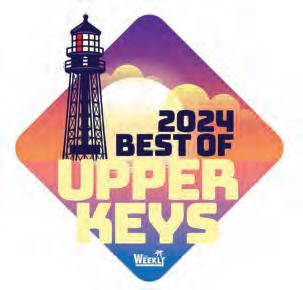
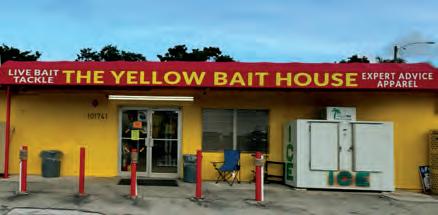

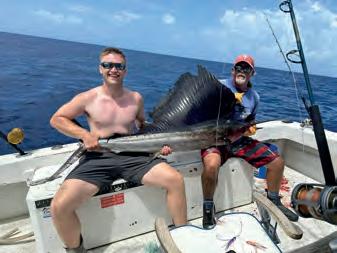
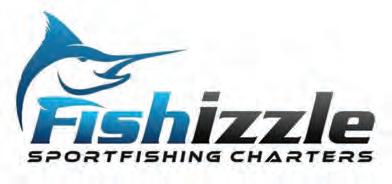



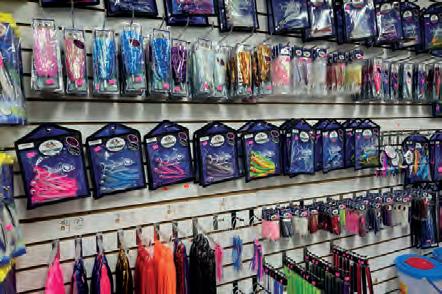


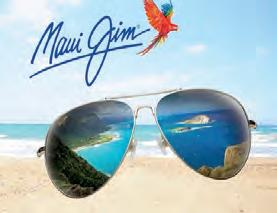
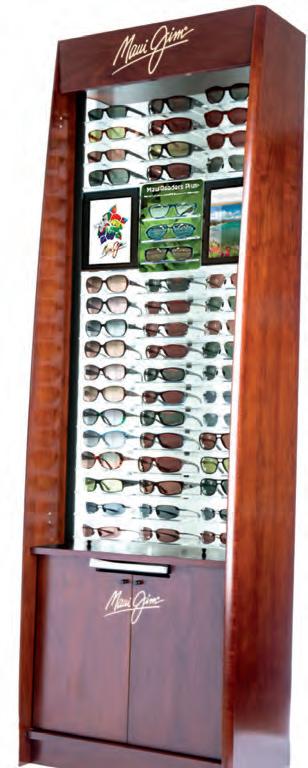
By Beth Steele
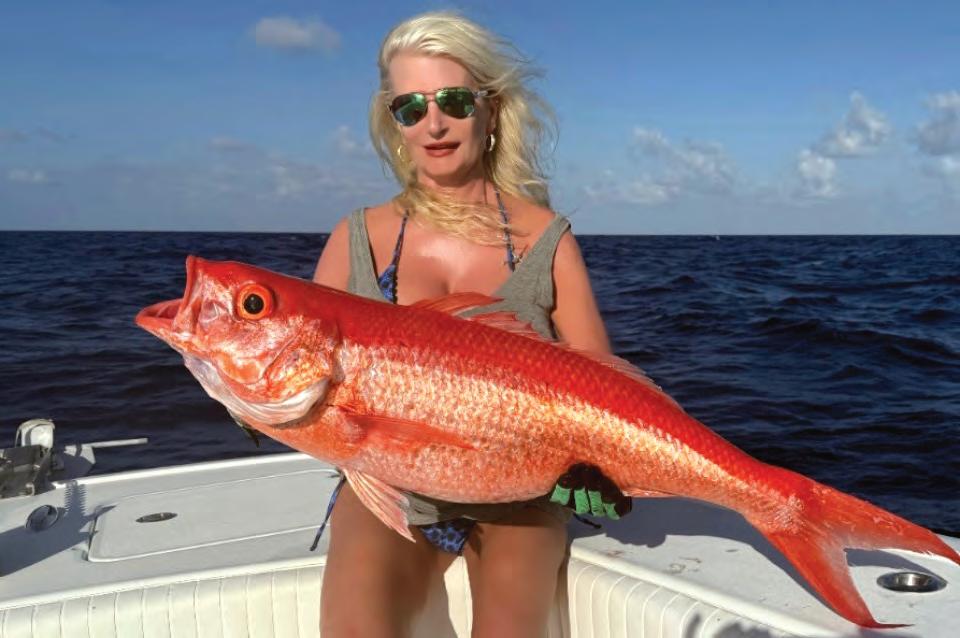

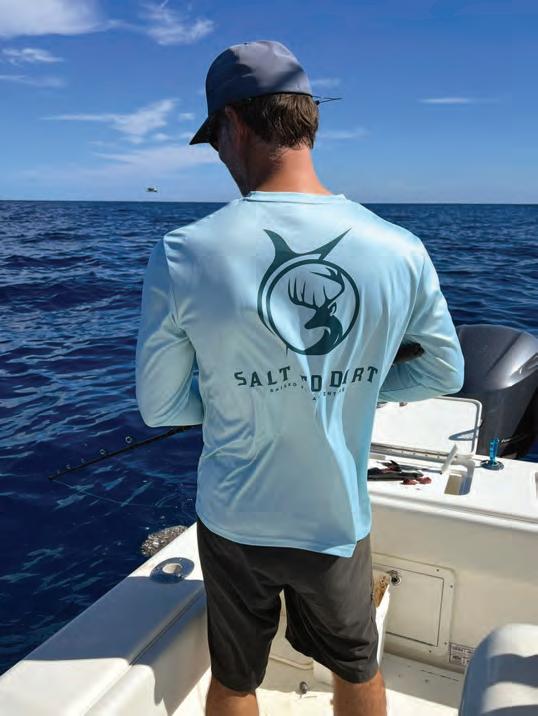
July and it is my favorite time of the year. Swordfishing is always my passion, but I also love deep drop season as well. Some people like to chase sunsets, but I like to chase what’s below the surface. I was so thrilled when I landed this big beautiful Queen Snapper. The last couple months the winds have not cooperated, however, this month has been terrific fishing weather. It was awesome to be out on the water and catch a couple swordfish along with some big Mahi. The Rosies and Barrel fish have also been plenty. There is no better feeling than hauling a broadbill on the boat, and it was exciting to tag and release this little guy and watch him swim away! I don’t go out for limits but I do like to go out for the moments.
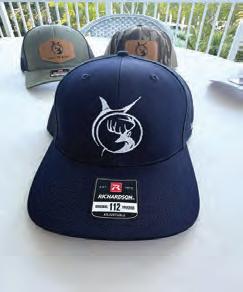






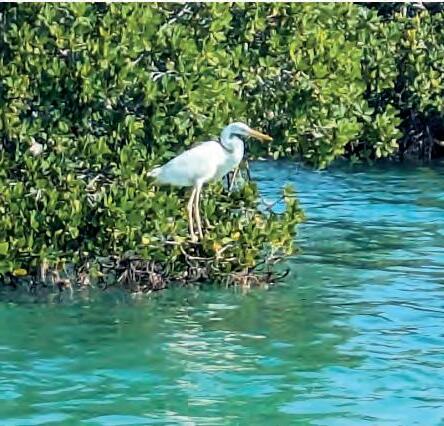


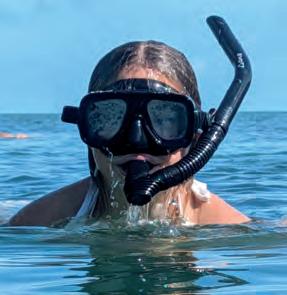

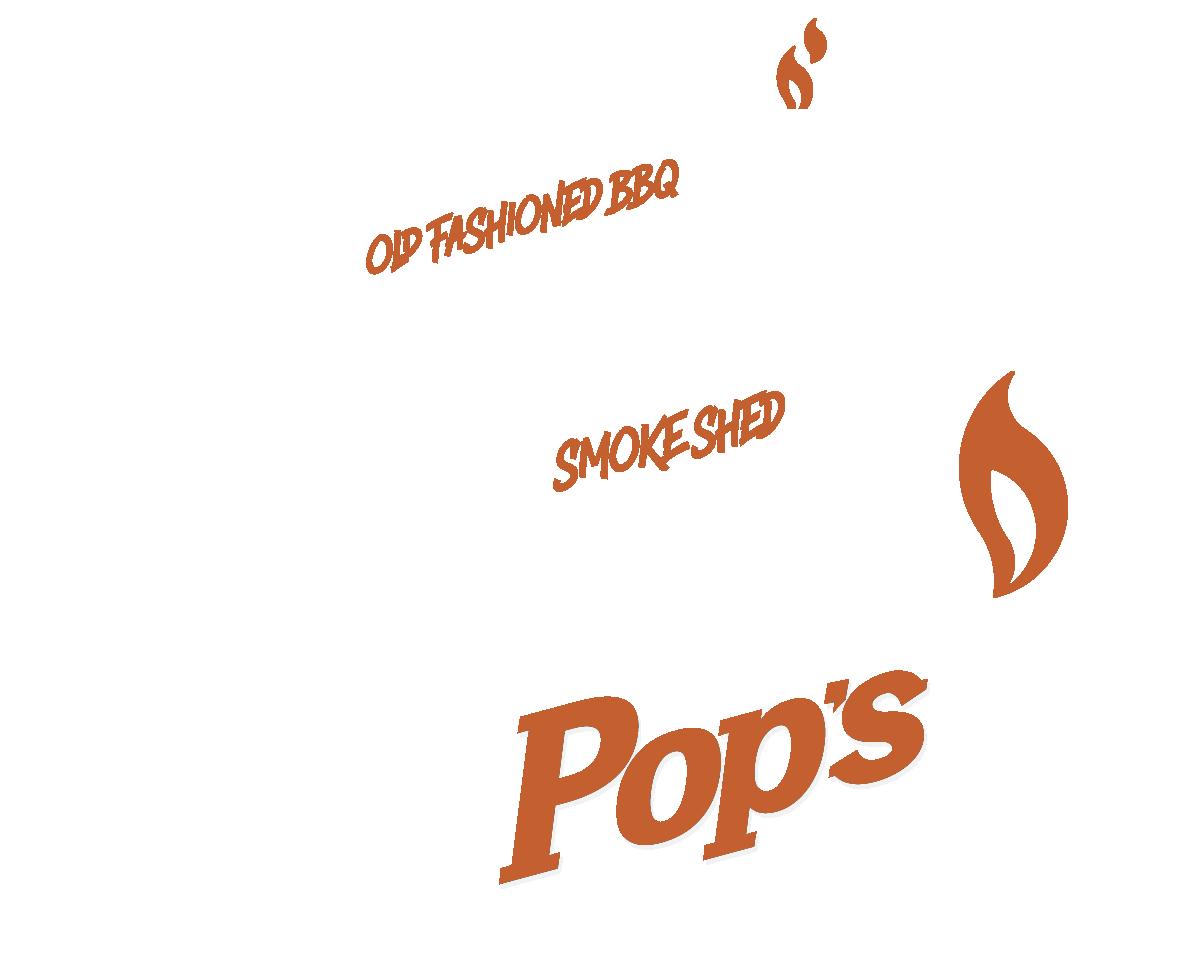


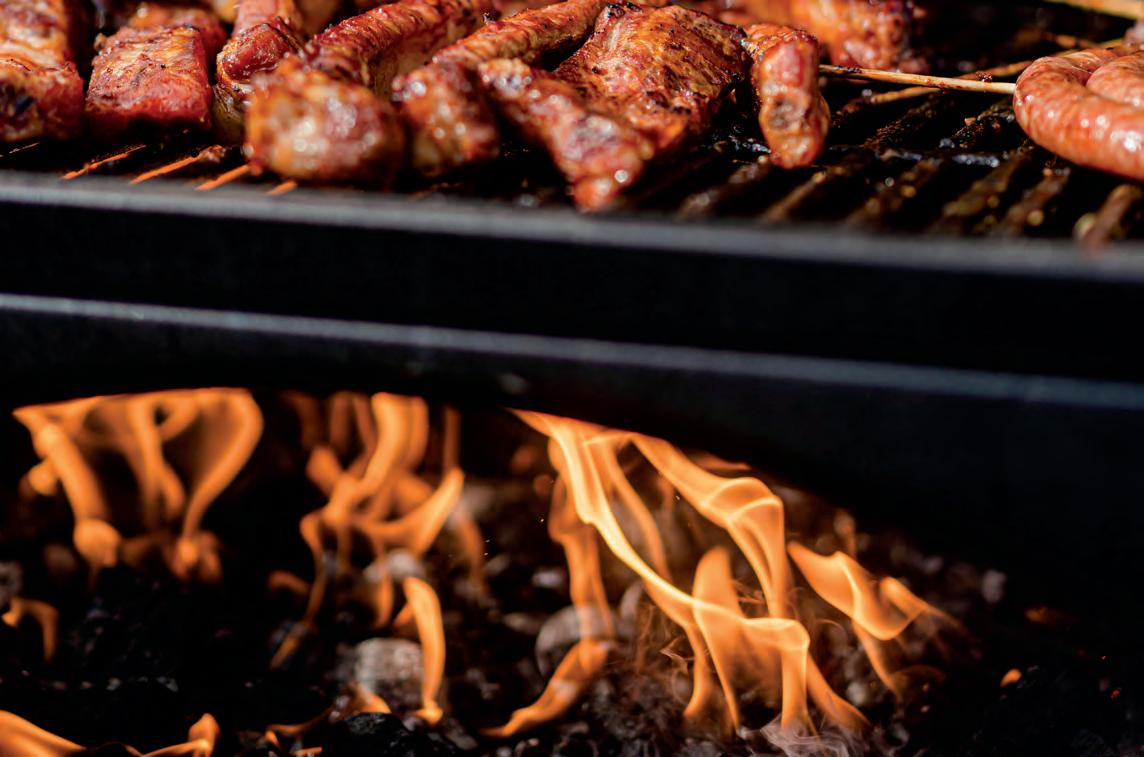
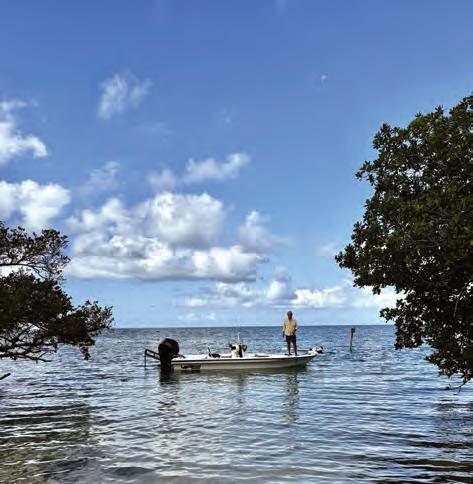
By: Capt. Rob Modys
I’m very happy to report that my wife JoNell and I made a move farther south in Keys. Our new home is located in Islamorada, a place that has a lot of very fond memories for us.
In the mid to late 90s, we started fishing the waters on both sides of Islamorada while living and working in Miami, Fort Lauderdale and the Palm Beaches. We’d escape the big cities just about every other weekend to trailer our 17-foot skiff to the Islander Resort. Back then it was much simpler with no restaurant or bar, but we loved the fact that it had a boat and trailer washdown. We arrived on Friday evening, fished all day Saturday and sometimes Sunday morning, and then head back up US1 in time for work on Monday.
The Lorelei Restaurant and Cabana Bar, became our hangout for most meals and entertainment, and was also a great place to listen to and join in on the fishing conversations that took place each evening.
We navigated Florida Bay with charts, a compass, and by trial and error as we explored the backcountry and eventually made it all the way across the Bay and northwestward to Cape Sable. Keep in mind that this was before the advanced GPS equipment that most of us use today. It was quite an adventure!
We have long talked about the memories and friendships we made during
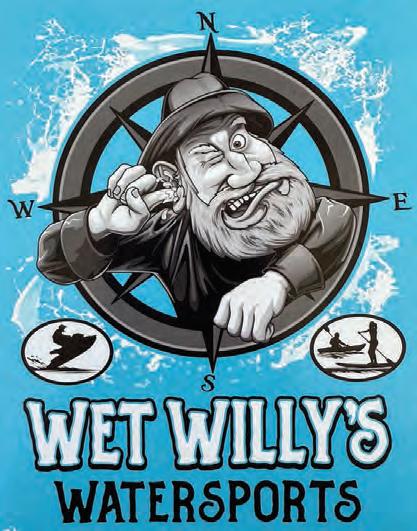
that time in Islamorada, but work finally got in the way and took both of us to the Southwest Coast of Florida. My wife worked in tourism in Naples, and I became a backcountry fishing guide working the waters near Sanibel Island and Fort Myers Beach. But the Florida Keys were always on our minds.
Things happened pretty quickly in 2019. I was on my fourth year of fighting cancer and JoNell was offered a job in Fort Lauderdale. We made the move, and just a few years later she was offered a job here in the Keys. We moved again, this time to Key Largo, and then another job change brought us to Islamorada. Sometimes the stars just seem to line up.
Recently we launched our skiff from the Safe Harbor Angler House Marina. What a strange coincidence that that marina used to be the Matecumbe Marina, where we launched the boat over 25 years ago. It’s a lot fancier now, but the way out to Florida Bay remains unchanged.
We had a great day on the water, which also led to me going out two more times that week.
Yes, we caught fish, but more importantly my takeaway from all three trips was how much I actually remembered about navigating Florida Bay. I guess our having to learn the Bay by route instead of electronics paid off in the long run for our return, and on that note, I have a suggestion. Practice turning off the GPS.
I feel sure that almost all boaters rely heavily on electronic navigation instead of a good old-fashioned compass and chart. And that’s OK, but what if the GPS fails? And they do fail. I’ve had it happen two memorable times. What I’m trying to relay to boaters is take the time to learn what is slowly becoming a lost art, navigation. With practice you’ll be surprised at how much you retain by simply watching the sun and water, the stars and moon, and realizing that not all mangrove islands look the same. And by the way. I’m not moving again!

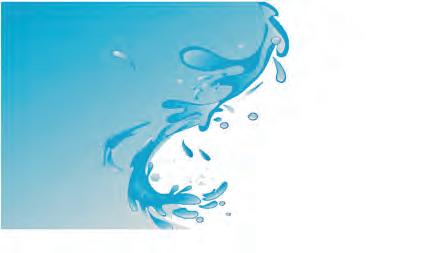
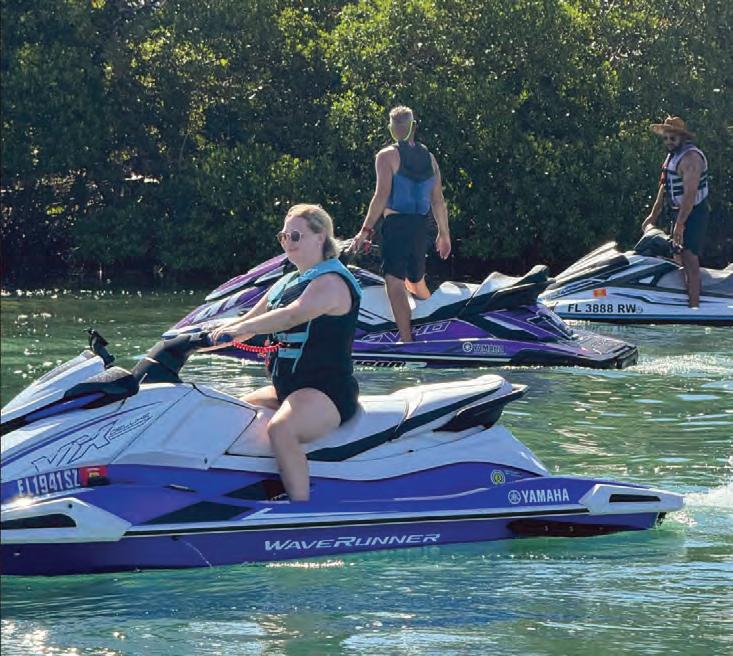
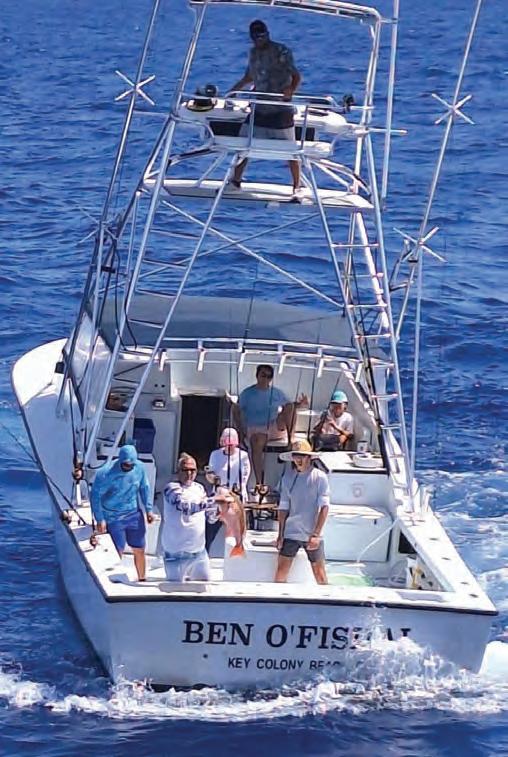



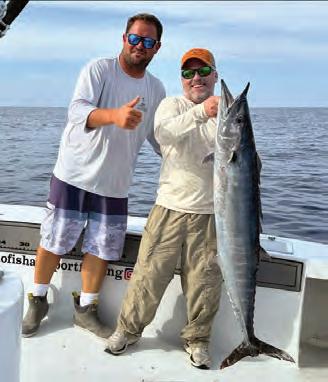
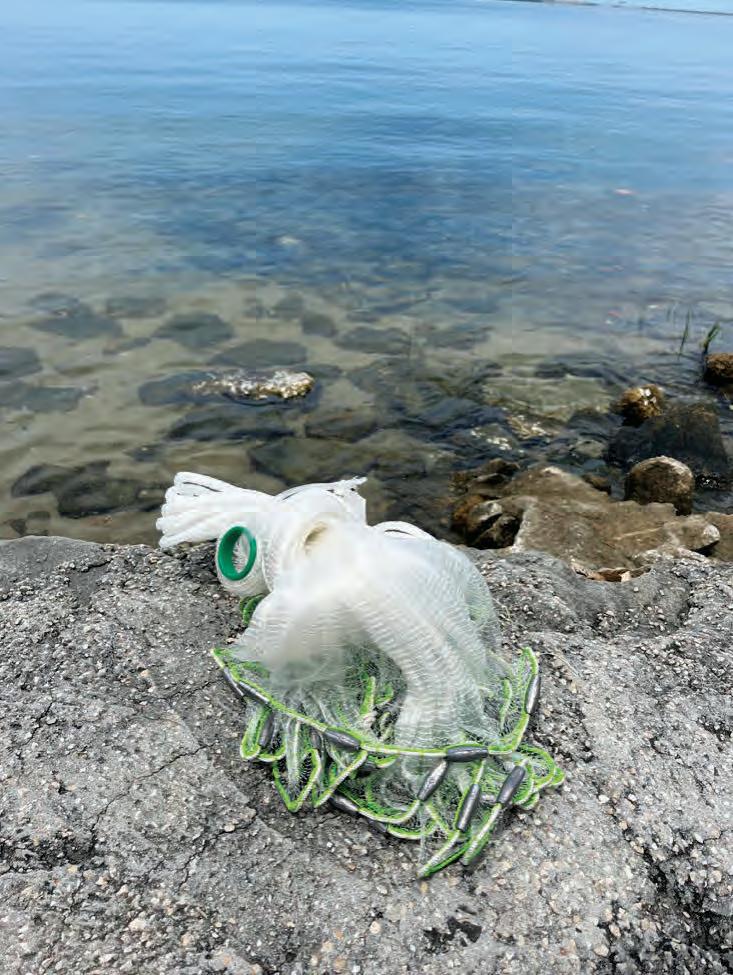

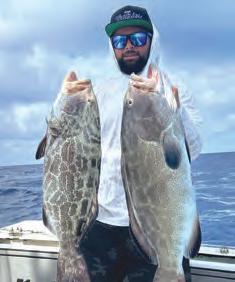



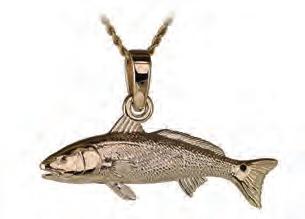
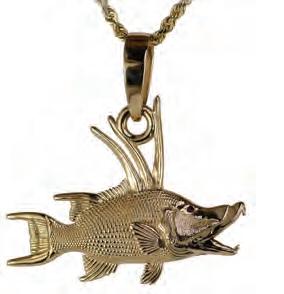

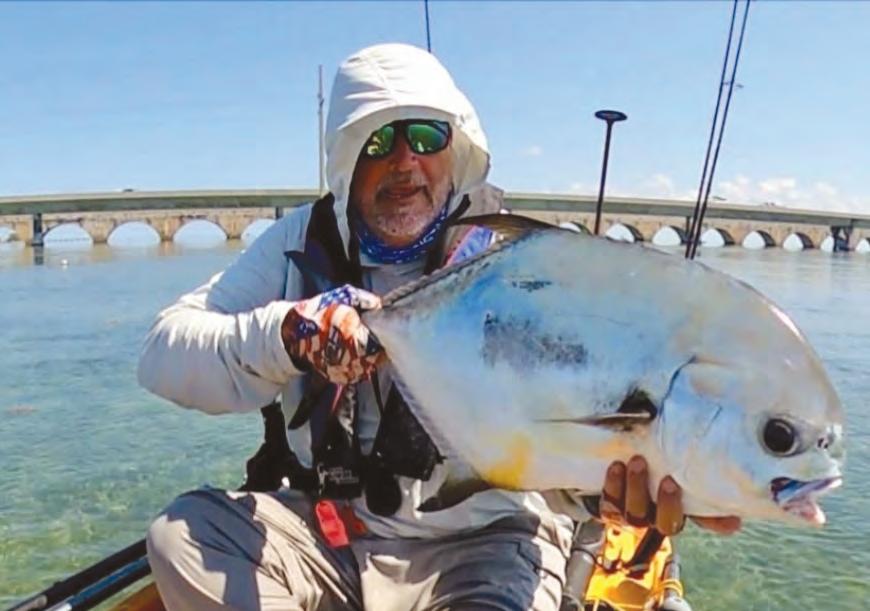

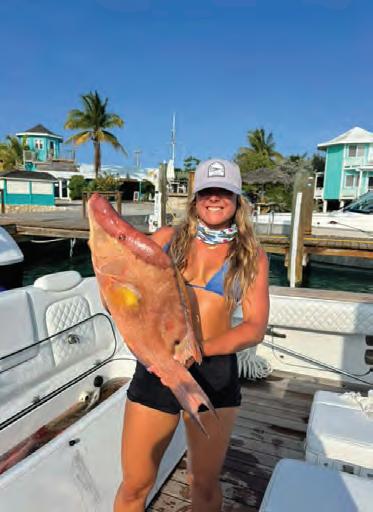
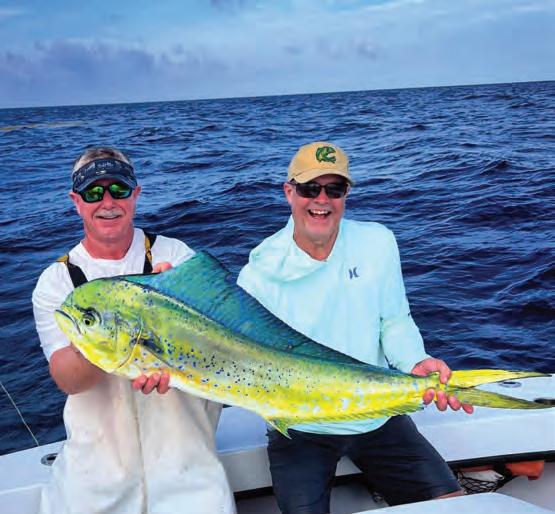
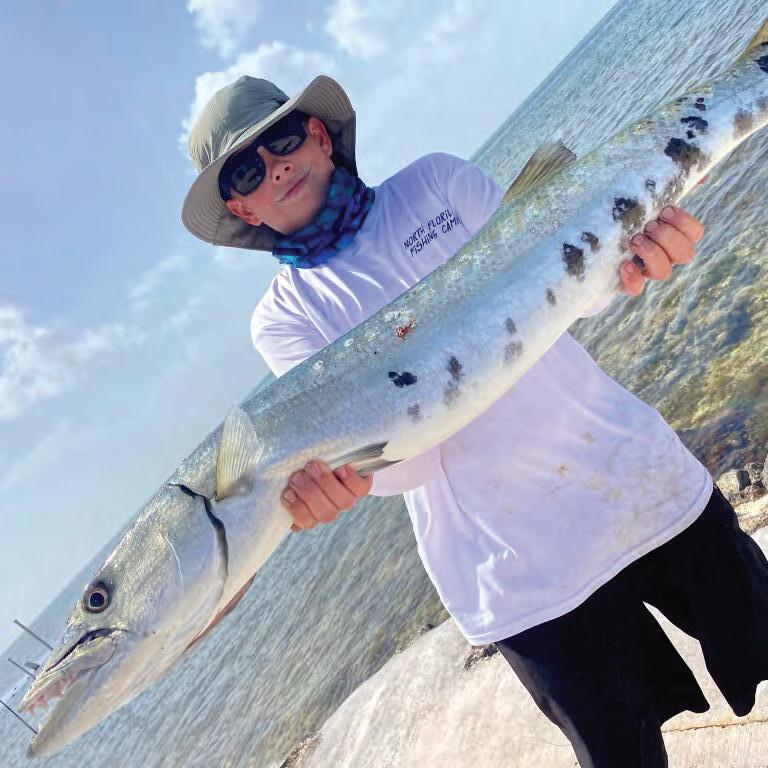
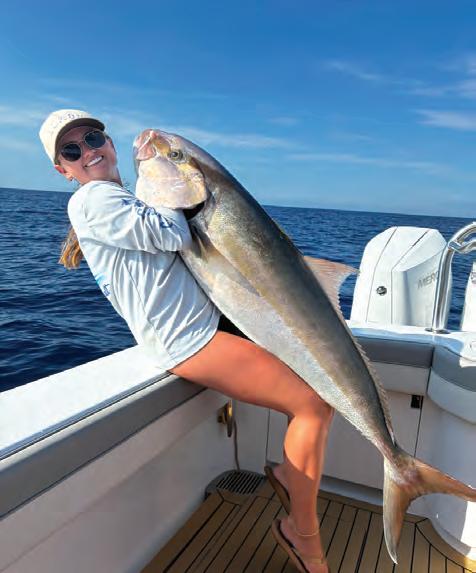



By A. deGruchy
For two days every July, Florida’s coastlines, especially in the Keys, come alive with divers, snorkelers, and boaters all chasing one thing...spiny lobster. !is short window, known as Lobster Mini Season, is a chance for recreational shers to get in the water and collect lobster before o cial season begins on August 6. It is fast-paced, competitive, and incredibly rewarding if you know what you are doing.
Mini Season always falls on the last Wednesday and !ursday of July. It is a long-standing Florida tradition and one of the most exciting events of the year for local divers and visitors alike. But it is also highly regulated and o$en chaotic, so the di erence between a great haul and a frustrating day o$en comes down to preparation.
To start, you’ll need snorkeling gear, a legal lobster gauge, a dive &ag, net and tickle stick. !e best nets are the “Lobster Florida Nets” by Brook Crist. !ese nets are lightweight, easy to handle in the water, and extremely e ective when it counts. When it comes to nding lobster, structure is everything. In the Keys, ledges and rocky crevices are prime spots. Look for antennae sticking out from under the ledges. Lobsters o$en cluster together, so if you nd one, there are likely more.



!e water depths also vary anywhere from 3 feet to much deeper, from 20 feet and beyond. To catch them, approach slowly from behind, use your tickle stick to gently coax the lobster forward, but never grab from behind as they’ll retreat deeper. When the lobster begins to walk, quickly position your net to block its escape. It’s important to note that spiny lobsters swim backwards when threatened, so your net should be placed just behind them, anticipating their retreat and staying one step ahead of where they’re going. Once in the net, grab the end of the net lining so the lobster doesnt escape and measure it in the water using your gauge. Only lobsters with a carapace of at least three inches can be kept.
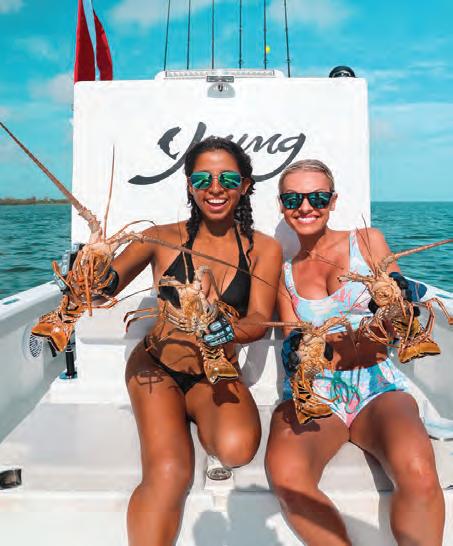
buddy, stay visible, and if you are not an avid diver, give yourself enough time between dives to catch your breath. Be aware of boat tra c and always use a dive &ag.
!ere are speci c regulations you must follow depending where you are, every are has limits and all lobsters must be measured while still in the water. You must also have a valid Florida saltwater shing license and a lobster permit.
Additionally, there are no-lobstering zones to be aware of; for instance, in the Florida Keys you cannot catch lobster within 300 feet of any shoreline, residential or commercial structure, public or private dock, jetty, or seawall from land during Mini Season. In some zones like the Key Largo and Islamorada Sanctuary Preservation Areas, lobstering is prohibited altogether. Always

When you return to the dock, a$er tailing the lobsters you can prep them however. Our favorite is to slowly poach them in butter and then mixing it into some homemade mac & cheese. However you cook them, there’s nothing quite like eating what you caught yourself. Florida’s Mini Season is one of the most thrilling sheries the state has to o er. With the right gear, smart planning, and respect for the rules and the reef, it’s an experience you won’t forget.
Follow deGruchy’s adventures at @bean_sport shing on Instagram and YouTube.




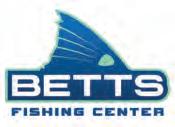

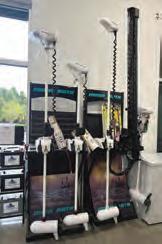


In the world of watersports, outdoors, and coastal living, staying ahead of the curve isn’t just a competitive edge—it’s a necessity. That’s where Surf Expo comes in. As the leading marketplace for watersports, coastal, and outdoor lifestyle brands, Surf Expo isn’t just another trade show—it’s the heartbeat of the industry.


Held twice a year in Orlando, Surf Expo draws thousands of retail buyers and brands from across the country—and around the world. From tackle shop owners and coastal outfitters to resort boutiques and outdoor lifestyle stores, attendees come to explore, connect, and stock their shelves with the hottest products for the season ahead.
What makes Surf Expo such an essential stop on the retail calendar? It starts with the sheer variety. From high-performance gear and accessories to apparel lines that bridge the gap between beachwear and everyday style, the show covers every angle of coastal living. Whether your customers are anglers, surfers, paddleboarders, or just enjoy hanging out on a shoreline, you’ll find products that resonate.
Surf Expo is a launchpad for innovation. It’s where new brands make their debut and where trusted names unveil their latest collections. Walk the floor, and you’ll see sustainable materials in outdoor apparel and gear—trends that shape what ends up in your store and, ultimately, in the hands of your customers.
But it’s not just about the gear. Surf Expo is a place to connect and build lasting connections. With educational sessions and hands-on demos, retailers gain real-time insights into consumer behavior, merchandising strategies, and industry evolution. The chance to hear from thought leaders and engage in conversations that shape the future of the industry is invaluable.
Even more than a business event, Surf Expo feels like a gathering of friends. There’s an unmistakable sense of community that comes from being surrounded by people who love the water, the outdoors, and the lifestyle that ties it all together. It’s an event where passion meets professionalism, and where inspiration flows.
For businesses grounded in coastal life—whether you run a marina shop, a beachfront boutique, or an outdoor outfitter—Surf Expo offers the perfect blend of product discovery, industry insight, and relationship building. It’s a one-stop destination to get inspired, get stocked, and get ahead.
Attend Surf Expo, and experience firsthand where the business of coastal lifestyle meets the adventure of the outdoors. Because when it comes to outfitting your customers for life on or near the water, this is where it all begins.
Visit surfexpo.com to see a list of exhibitors and events.
Qualified Retail Buyers - Register for Free Before August 21, 2025.









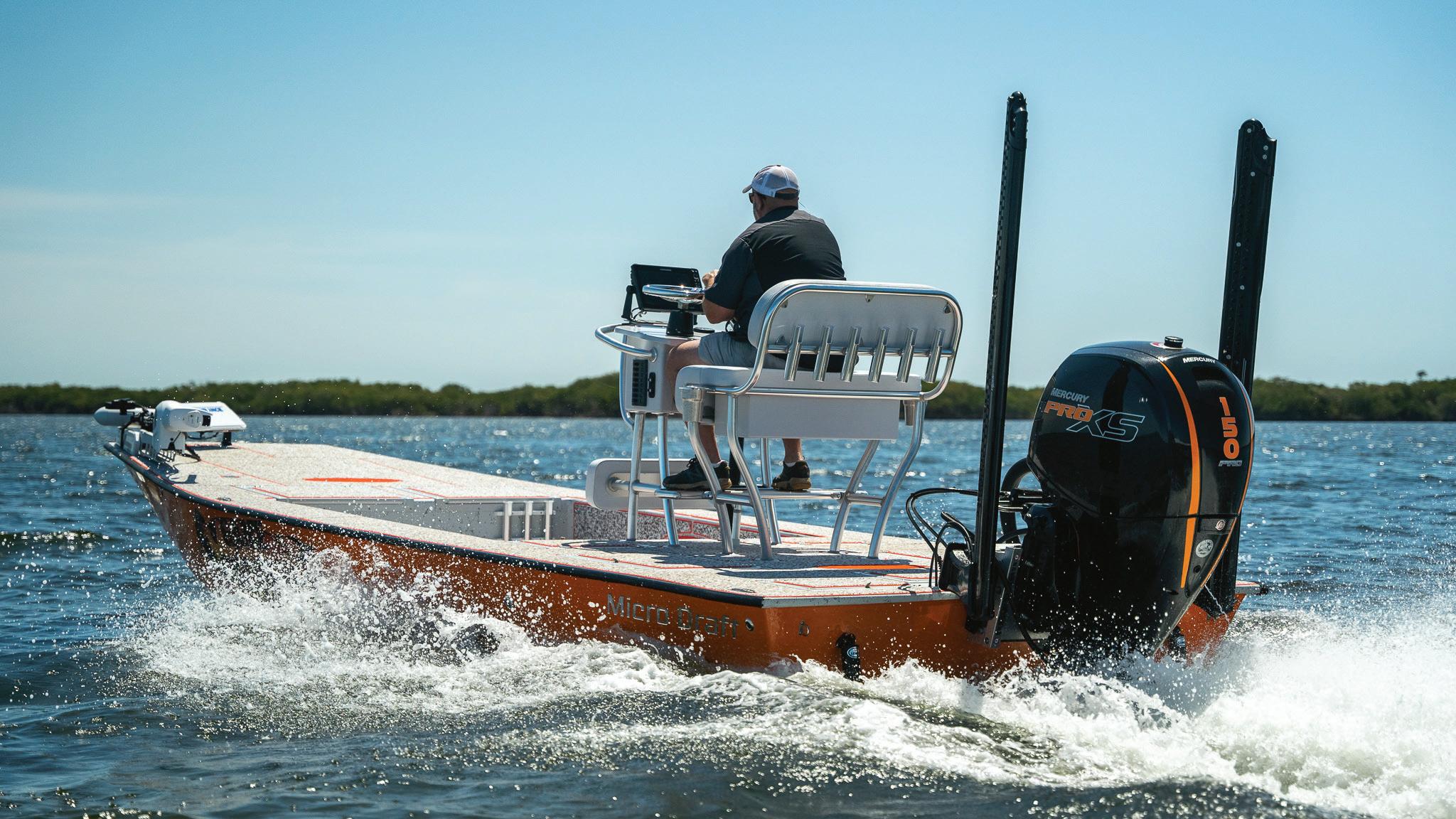
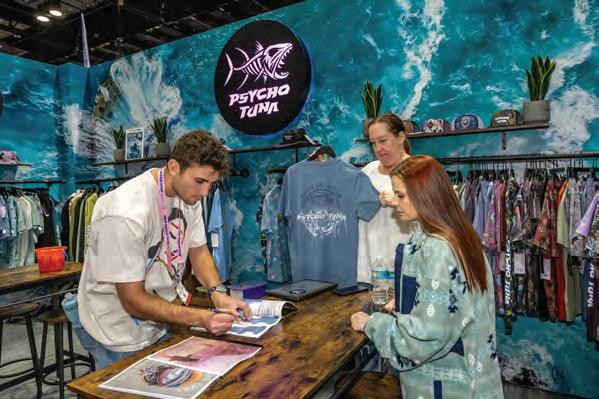
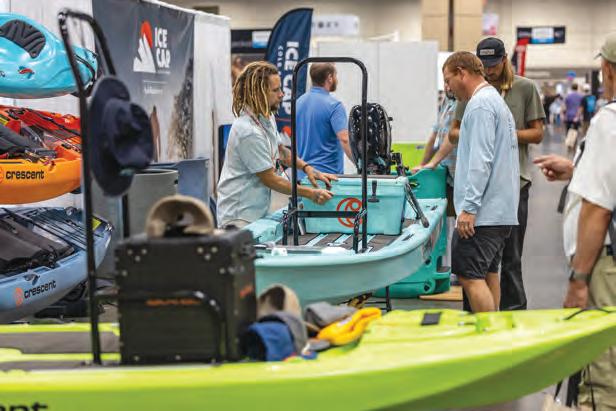
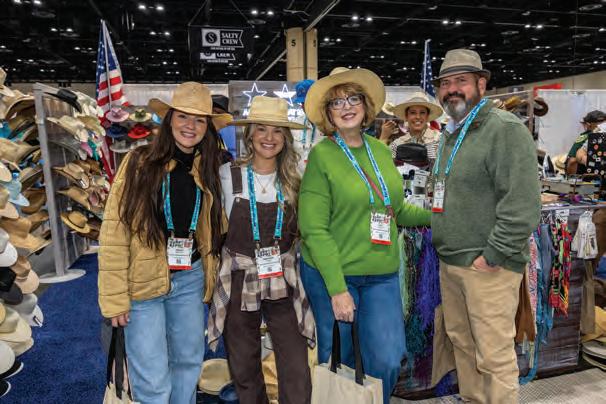
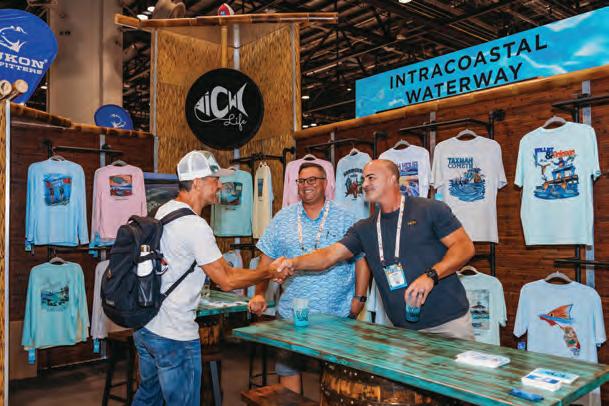

By atch Maguire
For retailers in the outdoor industry, showing up at ICAST each year is a pilgrimage that enables every town and every shery in many countries to be equipped to catch more sh and pursue their outdoor experience better. New innovations and inventions are the hallmark of this massive four day event, and while we all recognize the rapid rate of change occurring in our lives through advancements in technology and entrepreneurial excellence, witnessing the evolution of the art of catching sh over the last 25 years has, for this writer, been nothing short of mind-boggling. It’s as if the sh don’t stand a chance. Today’s electronics and gear are so advanced that anglers can almost negate the luck and even the skill factor that played such an important role in yesterday’s angling success. !at’s not to say acquiring the skills and
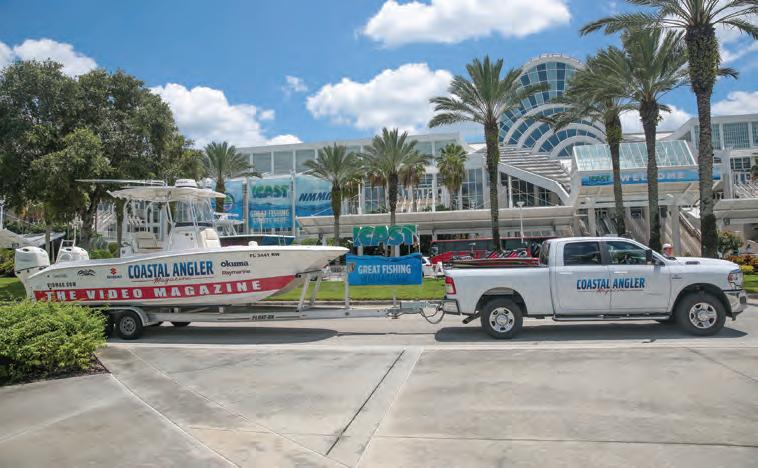
ICAST 2025, the world’s largest sport shing tradeshow, will be held July 15-18 at the Orange County Convention Center in Orlando, Fla. ICAST is a trade-based show and is not open to the general public. “The show is the cornerstone of the sport shing industry, bringing together manufacturers, retailers, consumers, conservationists, state agencies and other sport shing stakeholders. In its 68th year, ICAST continues to be the place where the most valuable business relationships are born, strengthened and celebrated.” www.icast shing.org
expertise to utilize today’s innovative equipment doesn’t require e ort, dedication, and focus as the pursuit of excellence in shing did a generation ago; it’s only to say that it’s di erent today and to suggest that it will continue to evolve.
I recently shed with an accomplished young guide for snook in the Sebastian Inlet (on the east coast of central Florida) and his electronics and forward sonar were so exceptionally dialed in that we literally targeted the largest snook with the precisely duplicated bait and in a three hour trip we caught nine world class snook that, any one of




which, 20 years ago would have been considered a “ sh of a lifetime.” Braid line, superior rods, smooth reels. All these advancements made their introductions at ICAST.
!is year, Coastal Angler and its’ vast network of Franchisee Co-publishers will be scouring the booths to bring you the latest and greatest in new innovations to our beloved sport.
For an up to date look at what we’re seeing at ICAST 2025, check out all of our ICAST coverage at CoastalAnglerMag.com and VidMag.com.
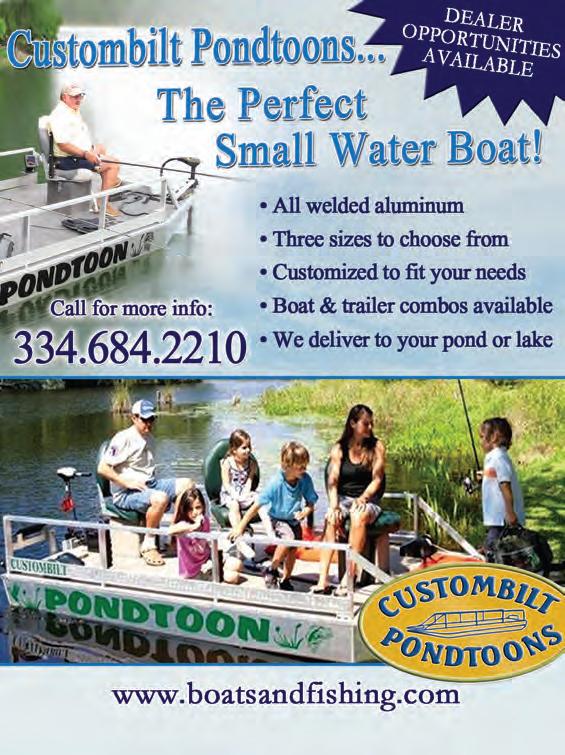
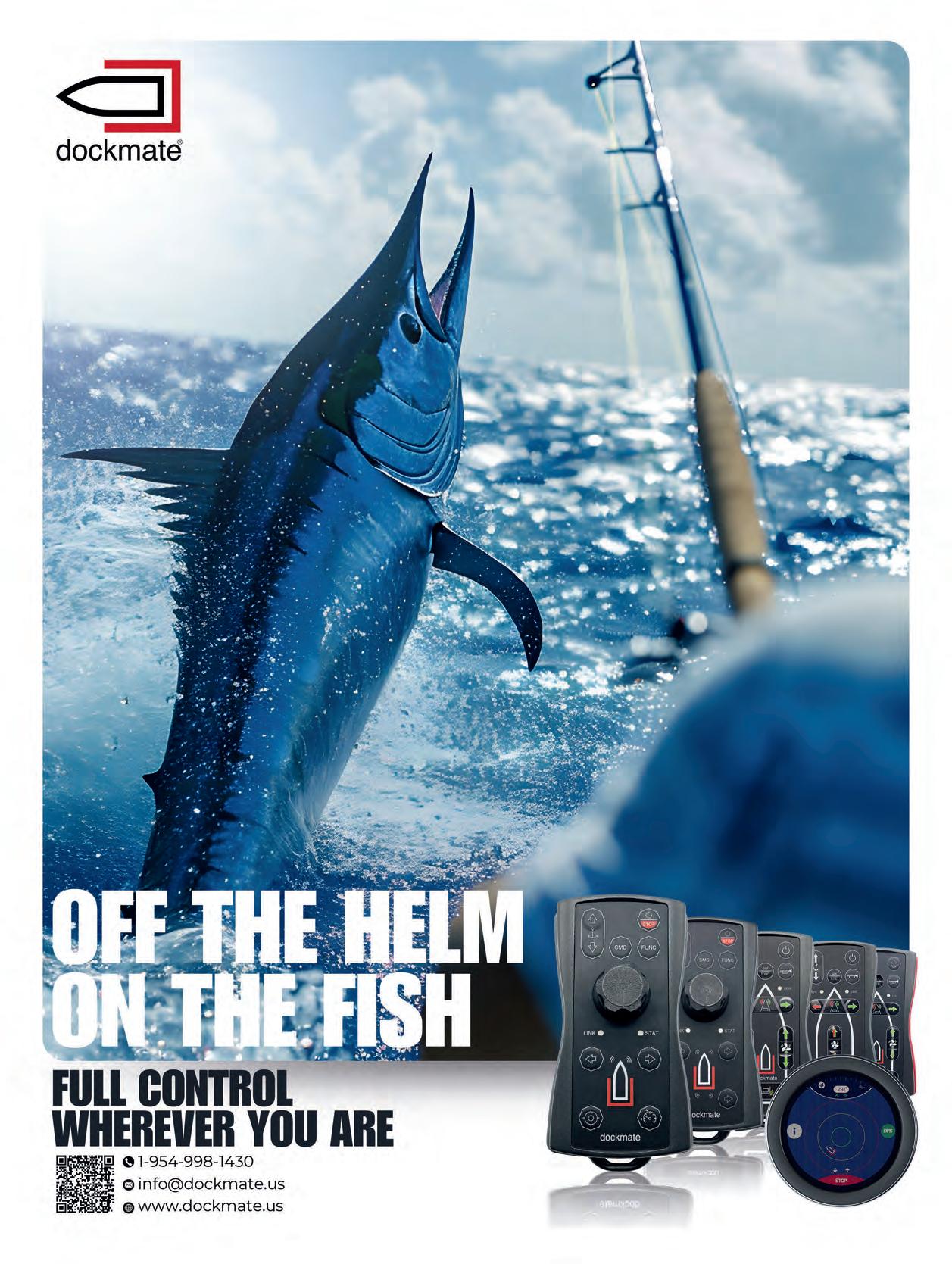

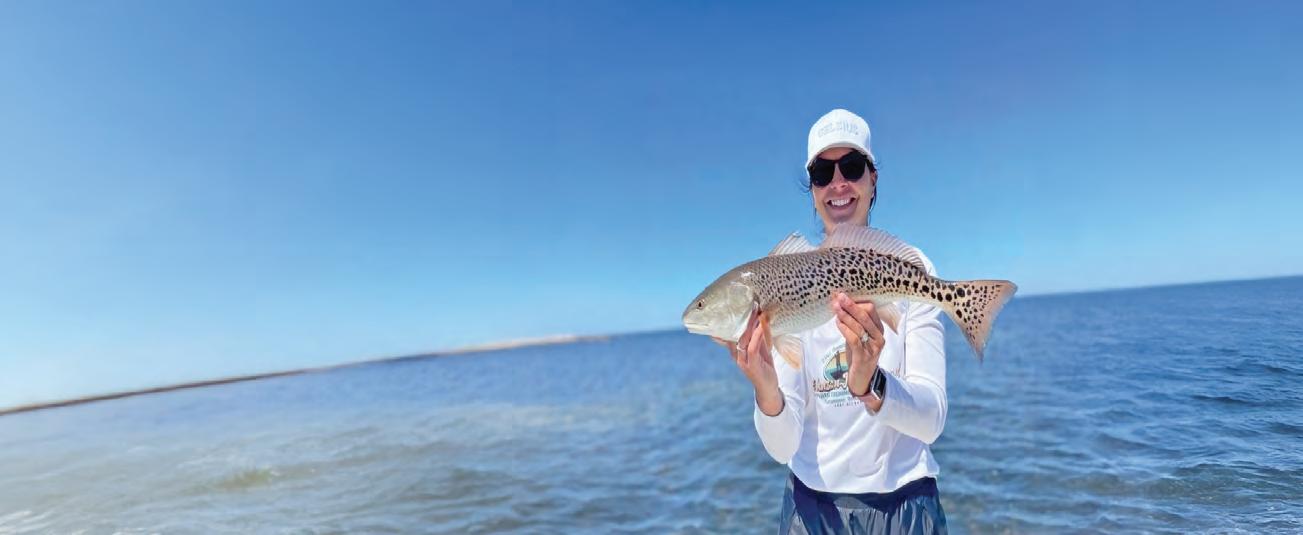
The Coastal Conservation Association (CCA) Florida STAR competition presented by Yamaha is thrilled to announce the newest division to the summer-long shing event, the Drum Spots “Lots-a-Spots” red sh division presented by Gulf States Automation. !e new division adds a unique twist to the popular catchphoto-release competition by awarding anglers for catching red sh with the highest number of spots.
Unlike any other division, “Lots-A-Spots” celebrates one of the most distinctive and eyecatching features of red sh, the iconic black spots. Participants in this division will submit photos of his or her catch, and the sh with the most combined spots on both sides will be awarded prizes.
“We’re thrilled to introduce the Drum Spots ‘Lots-A-Spots’ division presented by Gulf States Automation to the 2025 CCA Florida STAR competition,” STAR Director Capt. Leiza Fitzgerald said. “ !is exciting, new division adds another level of fun and strategy for our anglers, rewarding those who reel in the red sh with
the most spots. It’s a great way to celebrate the unique beauty of these sh while encouraging participation in a conservation-minded, catchphoto-release shing competition.”
!e “Lots-A-Spots” division continues STAR’s mission to highlight Florida’s diverse marine resources while encouraging sustainable practices through catch-photo-release participation. Anglers who participate in the division must submit photos of the le$ and right side of the red sh. !e winning sh will be the red sh with the most spots counted and combined on both sides of the sh’s body.
!e 2025 CCA Florida STAR competition presented by Yamaha invites anglers and nonanglers alike to participate for their chance to win prizes valued at almost $500,000, including boats from Carolina Ski , Sea Born, Spyder and Micro Dra$ Ski , Yamaha motors, scholarships and more.
Registration is open throughout the competition. To register for STAR 2025 or for more information on divisions, prizes and more, visit cca star.com.
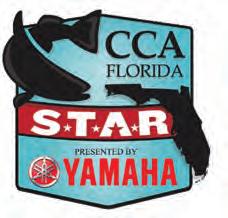
• 1st Place: SUP Customs Hybrid Skiff with trolling motor bow mount, Minn Kota Riptide Power Drive 12V Trolling Motor & transom bracket with 6HP Yamaha, Power Pole Micro, and a great accessories package plus a Ross Currington Art replica of winning redfish
• 2nd Place: Abyss Battery 36V Battery with charger, Ross Currington Art replica of winning fish, Bull Bay Rod/ Florida Fishing Products Reel and Bahio Sunglasses
• 3rd Place: Power Pole 8ft Sportsman, King Sailfish Mount replica of winning fish, Bahio Sunglasses and Relentless Knife
• 4th Place: original art piece by Ashton Howard, RCI optics and NLBN Package
• 5th Place: Bay Flats Lodge fishing trip for two plus food and lodging for two nights, RCI Sunglasses andToadfish Package
• 6th Place: Humminbird Helix 7, RCI Sunglasses, Zman Baits, Toadfish Package and NLBN Package
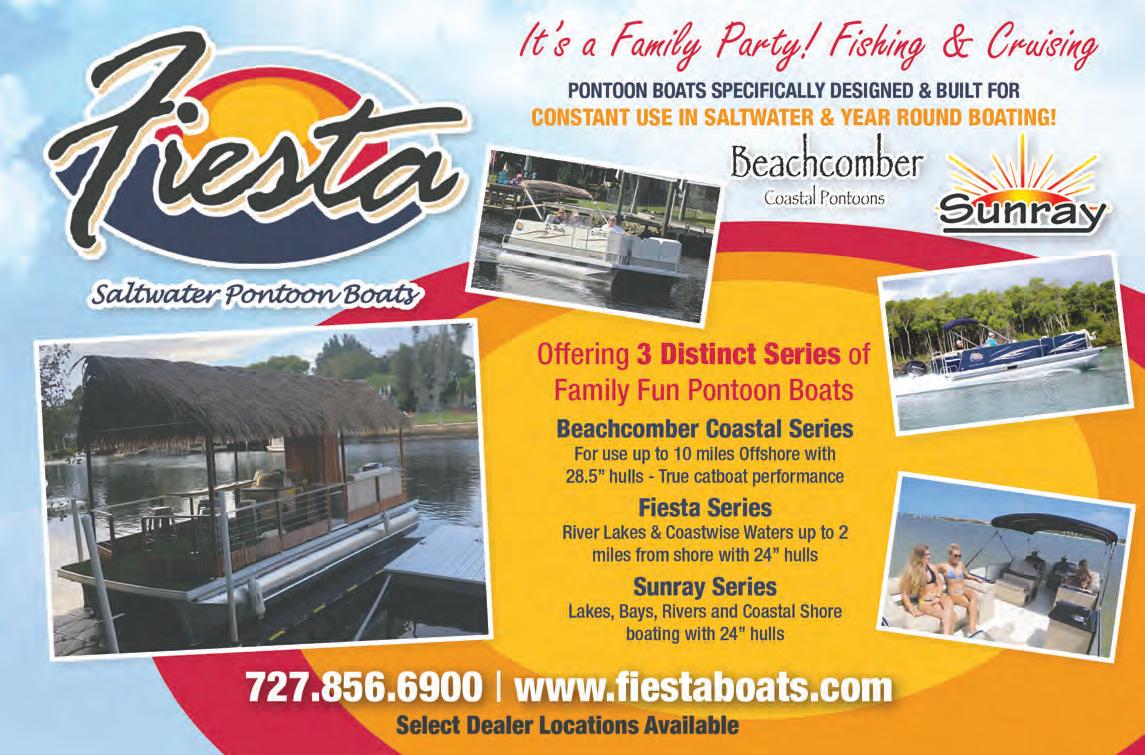






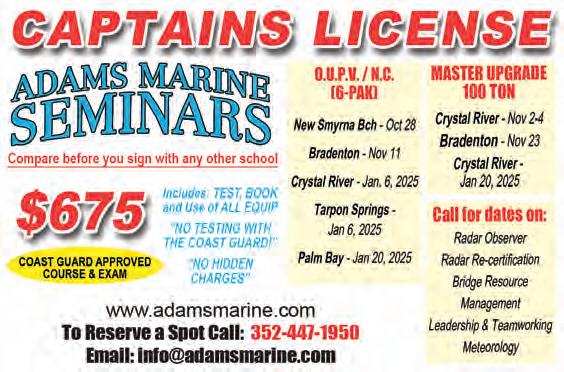









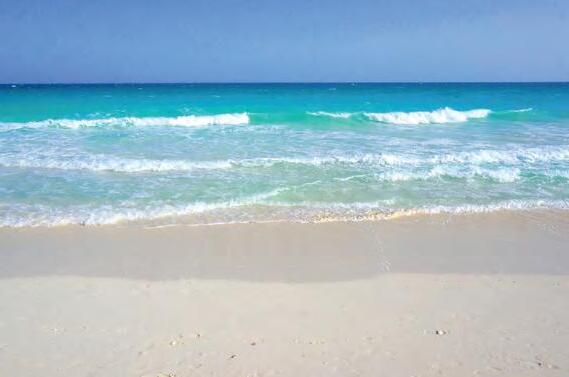



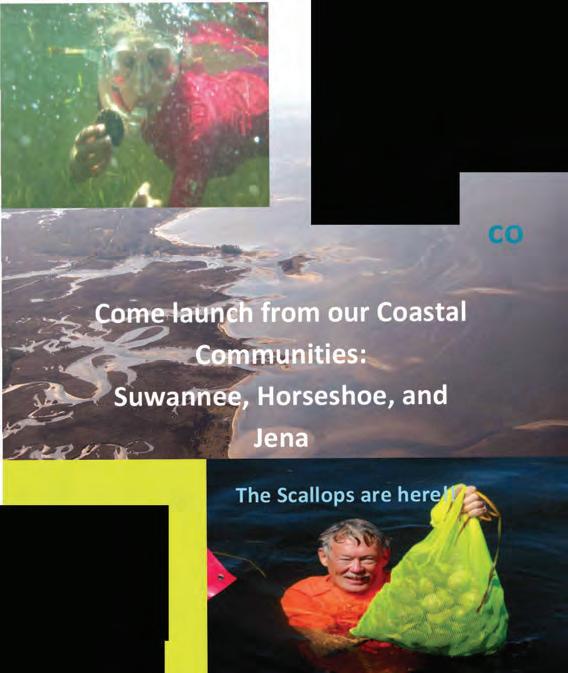
The International Game Fish Association’s (IGFA) world record database is a great source for folks who like to see some of the great sh anglers are catching around the world. Here are a handful of catches recently approved for the record books. For more world records, visit the IGFA website at igfa.org.
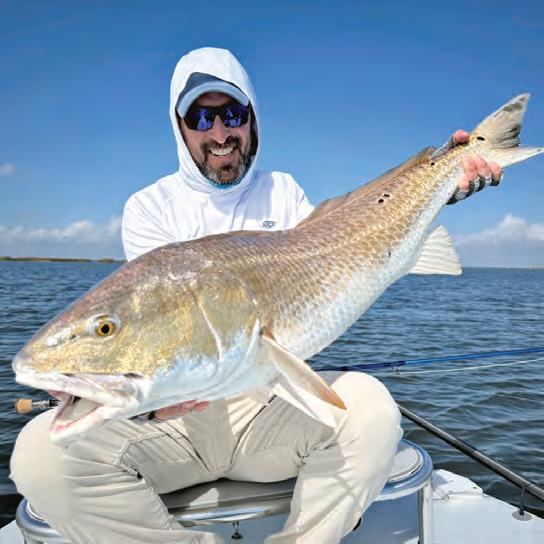
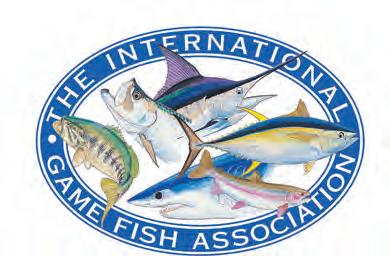

On November 11, 2024, Earl Gill IV was shing aboard the Excel captained by Justin Fleck when he landed this massive 443-pound yellow n tuna. With this sh, Earl has set the IGFA All-Tackle World Record as well as the IGFA Men’s 60-kg (130 lb.) Line Class World Record for the species, surpassing the previous records by 16 pounds! !e Excel was shing the Lower Banks o Mexico when this record yellow n struck Earl’s cut bait. A$er an intense 1 hour and 45-minute ght, the crew was able to ga the tuna and bring it aboard.
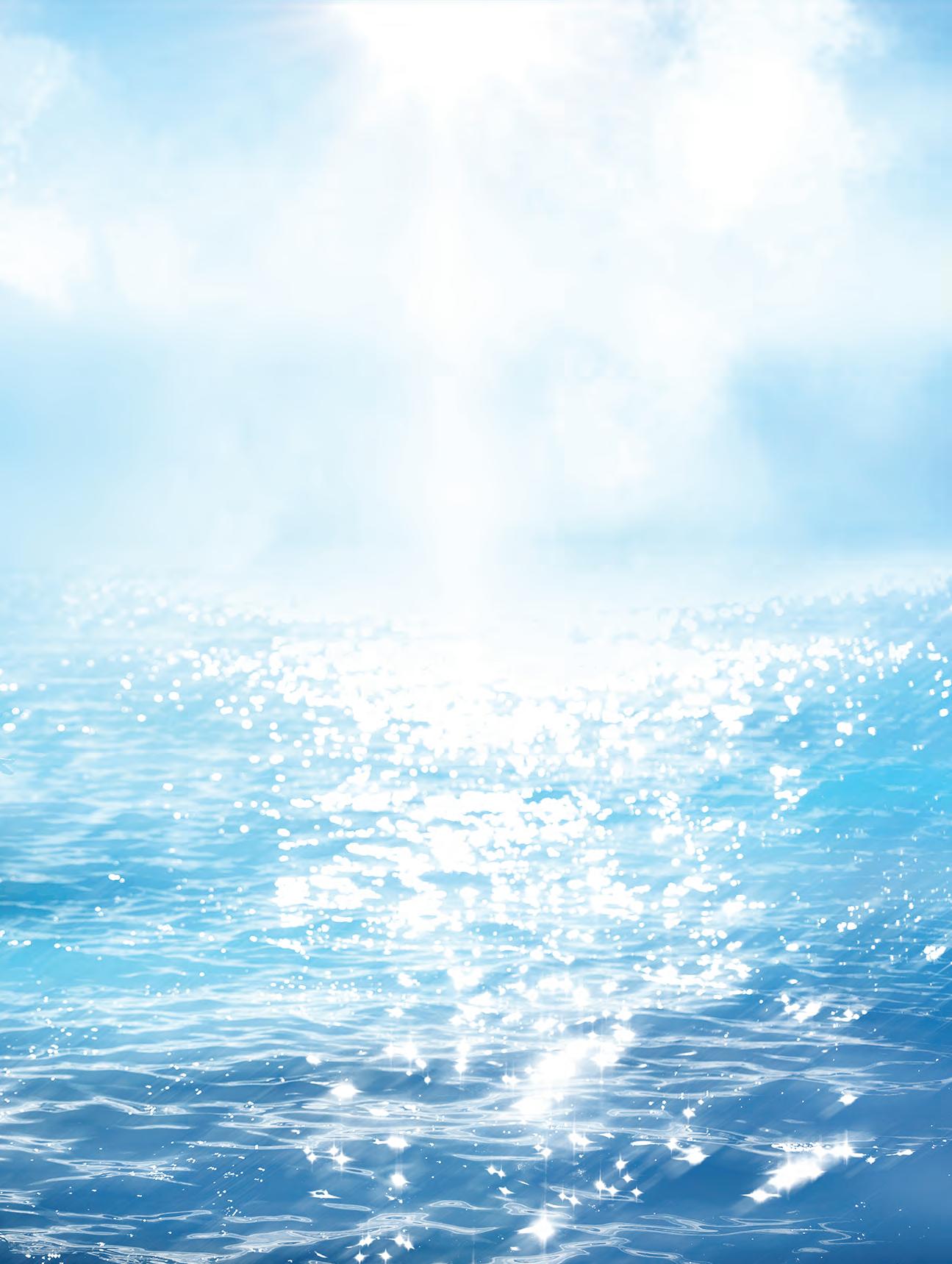
On February 9, 2025, Graig L. Hale was shing the backwaters near Port Sulphur, Louisiana, when he landed a 37.4-inch (95 cm) red drum—tying the IGFA All-Tackle Length Fly World Record for the species. !e record red sh ate a crab &y while Graig was shing with Capt. Scott MacCalla, making for an unforgettable day on the water. A$er boating the sh, Graig was able to record the length on his O cial IGFA Measuring Device before releasing the sh safely.

Pamela Moss was shing on Lake Lanier in Georgia on February 10, 2025, when she landed this 9-pound, 5-ounce landlocked striped bass. With this sh, Pam has set the IGFA Women’s 4-kg (8 lb.) Tippet Class World Record for the species. She was shing with guide Dillon Lancaster when she landed this record sh. She released the sh safely a$er recording the weight on her certi ed scale.
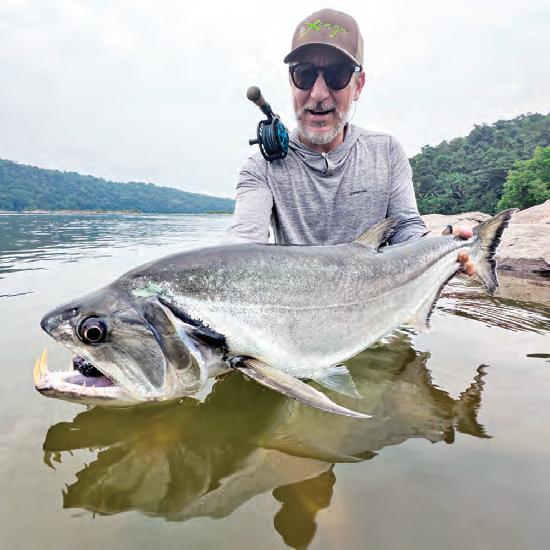
On November 22, 2024, IGFA Representative and multiple World Record holder, Rodrigo Salles, was shing the Rio Xingu in Brazil when he landed this 33.07-inch (84 cm) payara. With this sh, Rodrigo has set the IGFA All-Tackle Length Fly World Record for the species. Rodrigo landed the toothy payara on a black streamer &y. He was then able to record the length on his O cial IGFA Measuring Device before releasing the sh safely.

When it’s time to get on the water, your gear should be as ready as you are. Introducing the new and completely redesigned - Plano® StowAway®. Thick, pre-cut dividers make for easy box setup. More divider slots allow you to store more lures. RustrictorTM technology blocks rust and corrosion to help keep your favorite tackle rust-free. A single latch with a labeling area helps to quickly identify and access tackle on the fy. The best part? We’ve kept your favorite Plano StowAway at the same affordable price. Don’t just be kind of ready - be Plano ready.


July and August will be the hottest months of the year. !e wahoo and yellow nn will be everywhere and nowhere they should be. For example, you could go up and down the edge of the break and not nd a wahoo or a yellow n anywhere, but the guy slow trolling a menhaden for king mackerel 10 miles o# the beach catches a 100-pound wahoo or the guy 30 miles o# the beach light lining a pin sh while bottom shing catches a 50-pound yellow n. None of it makes any sense this time of the year, except one thing... nd the bait, nd the sh. !e same thing applies to bottom shing. !is is the time of year to search for big stacks of bee liners, cigar minnows, and sardines. Keep an eye on the recorder when you’re running to wherever you’re going, and if you see a big stack of bait on the surface, take a minute to check it out. If that stack of bait happens to be near pretty bottom, there’s a good chance it’s a good place to sh. !is is the time of year when it is especially productive to jig live cigars and sardines and put them back out.
whatever you want to, but stay focused on the bottom. Always keep a pitch rod handy with a live cigar, mina or sardine on a small circle hook and $ourocarbon. You never know when a sail sh will swim by the boat. When it does happen, remain calm do not go screaming and running around the deck because, chances are, you will spook the sh and not get another shot presenting a bait to it. If you’re very quiet, chances are a sail sh will come right back to the boat and you’ll get a shot at hand-feeding him a cig or sardine. And just like that...you’re hooked up!
It’s always a good idea to keep one person dedicated to the Sabiki. When you have big marks on the bottom or see schools of bait on the surface, just know that every one of those minnows caught on the Sabiki turns into a bite, either on the light line or on the bottom.
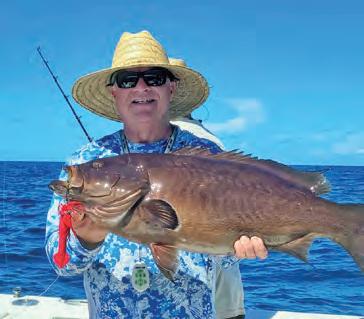
Of course, I have to say all of this to promote bottom shing because I do not believe in trolling. For all the sh you’re trying to catch trolling, you can hook on the light line while bottom shing. Not only that, sh are a lot more fun to catch on light tackle from an anchored-up boat rather than with trolling gear. Do I like to catch kings and dolphin on the light line? Yes. Are they my favorite sh to eat? No! Yes, they are edible, but I prefer to eat sh from the bottom. So, keep a light line out to catch and release
Needless to say, a live cig or sardine has a life expectancy on my Decoy Jig of under 10 seconds and everything eats one on the light line.
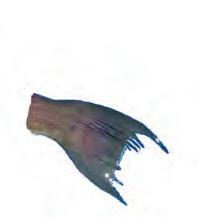
So, go to all your normal places in July and August that traditionally hold the bait, and you will most likely nd the sh. Live bait is always the best, but don’t ever leave the hill without a box or two of frozen cigar minnows. More sh have been caught on frozen cigs and sardines, than all the other baits combined. It’s never a bad idea to take live pin sh from the marina as well; the beauty live pin sh is that not everybody down there can put it in their mouth which eliminates a bunch of trash bites.
Yes, you will have to deal with catching and releasing all the “endangered” American red snappers and gag grouper, but that’s just what you’re gonna have to do until we can get this straightened out. Learn how to handle these sh properly for a successful release and come home with some good dinners.
Check out more from Tim Barefoot at barefootcatsandtackle.com.


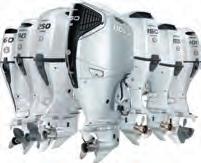
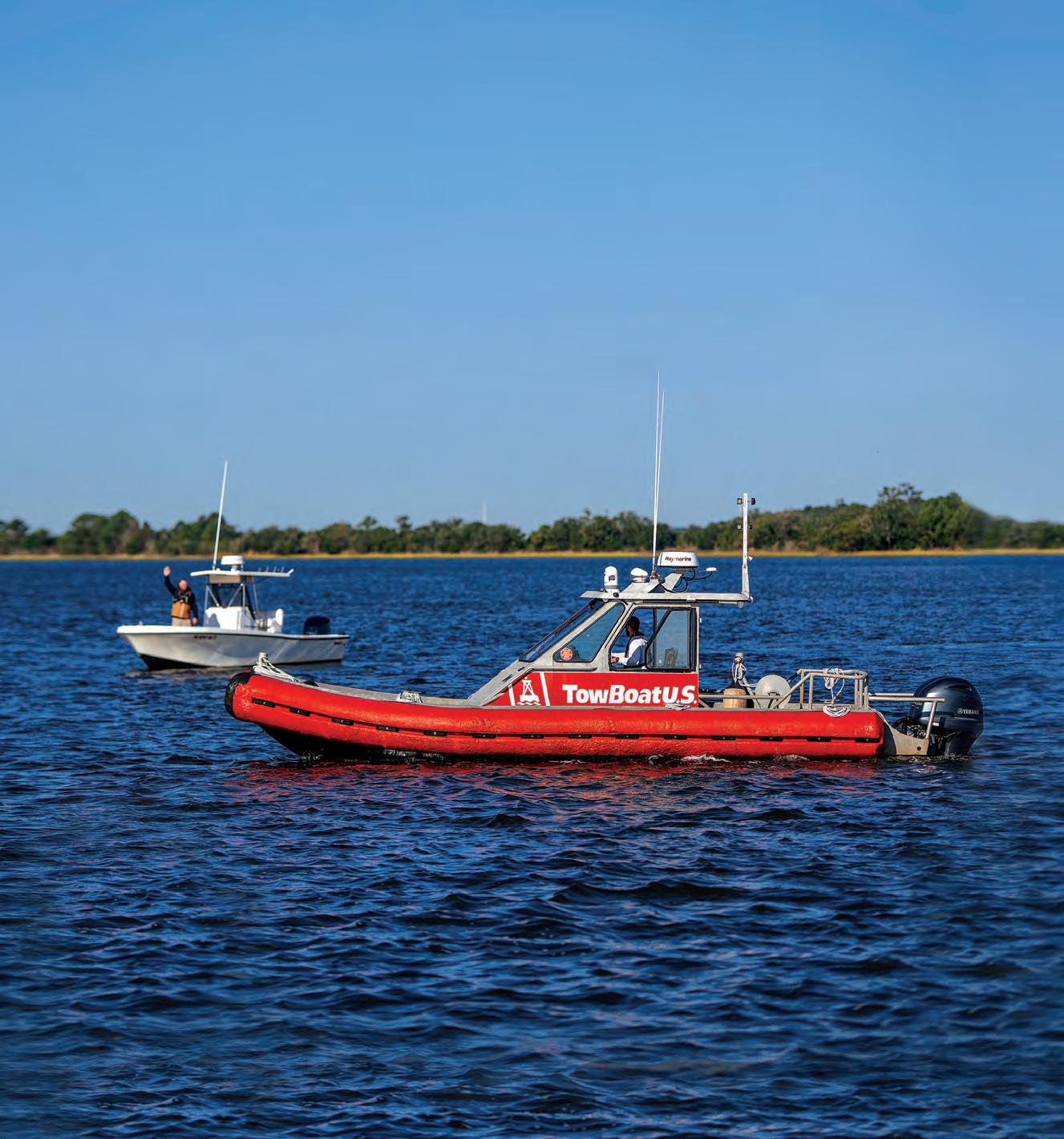
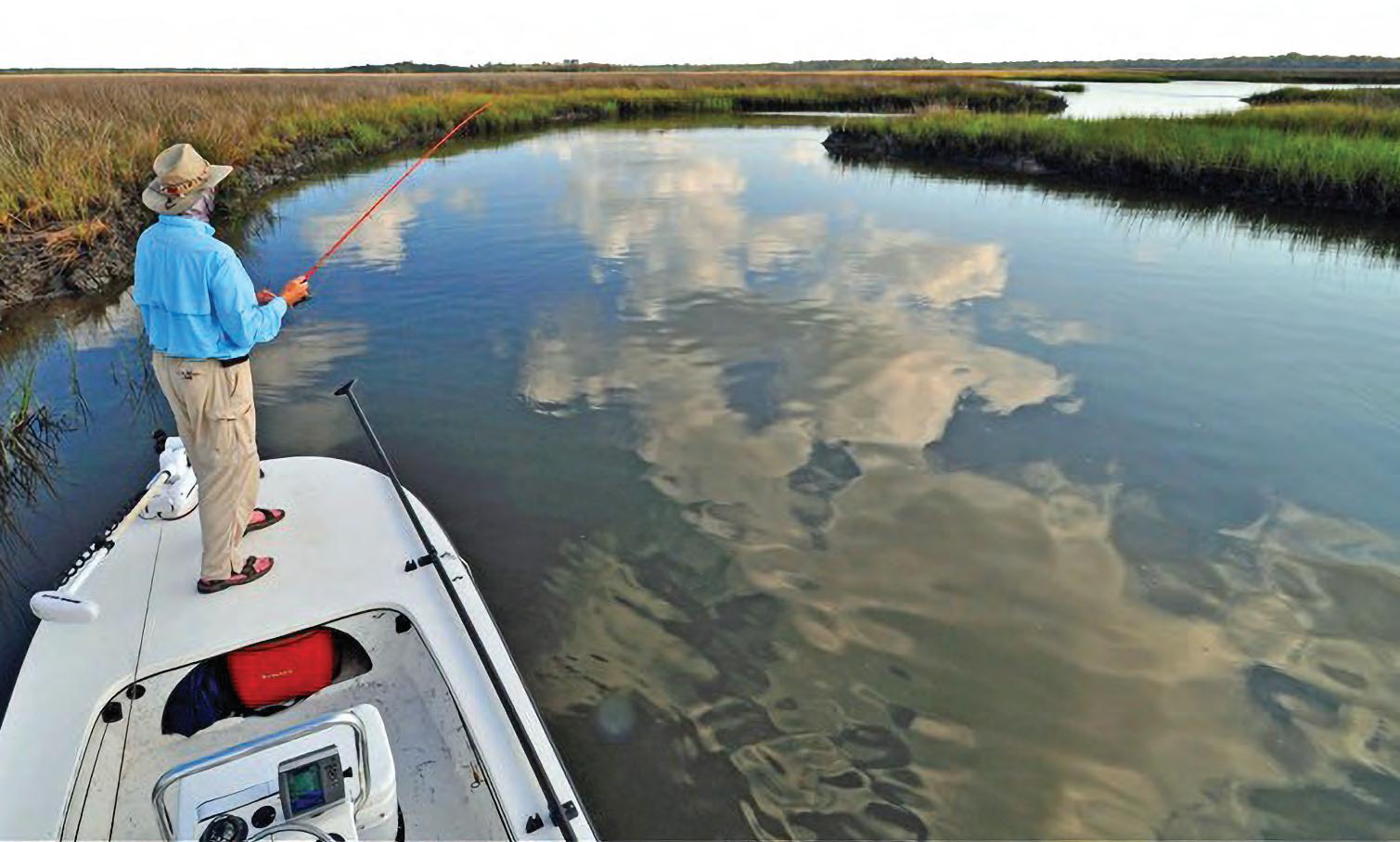
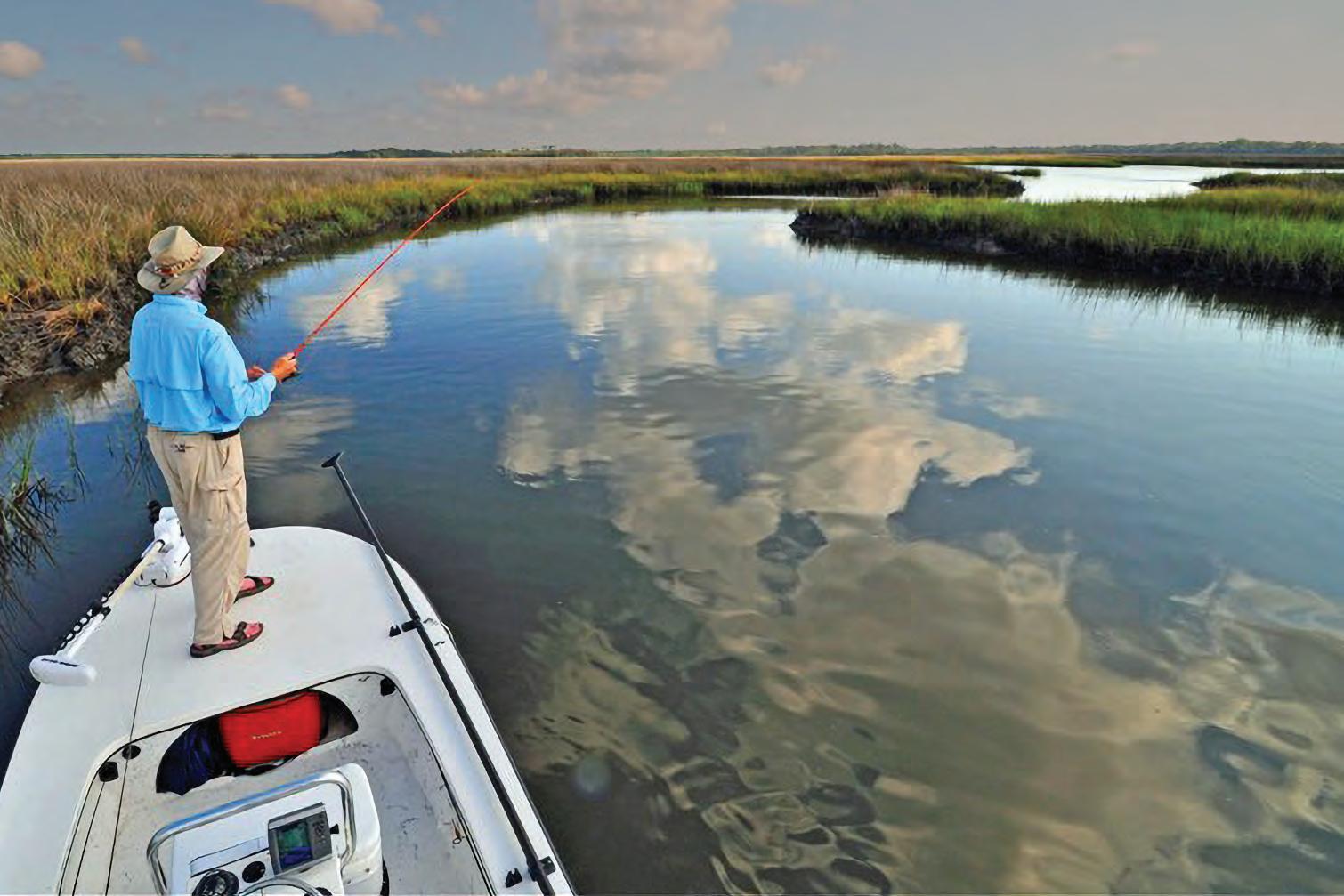




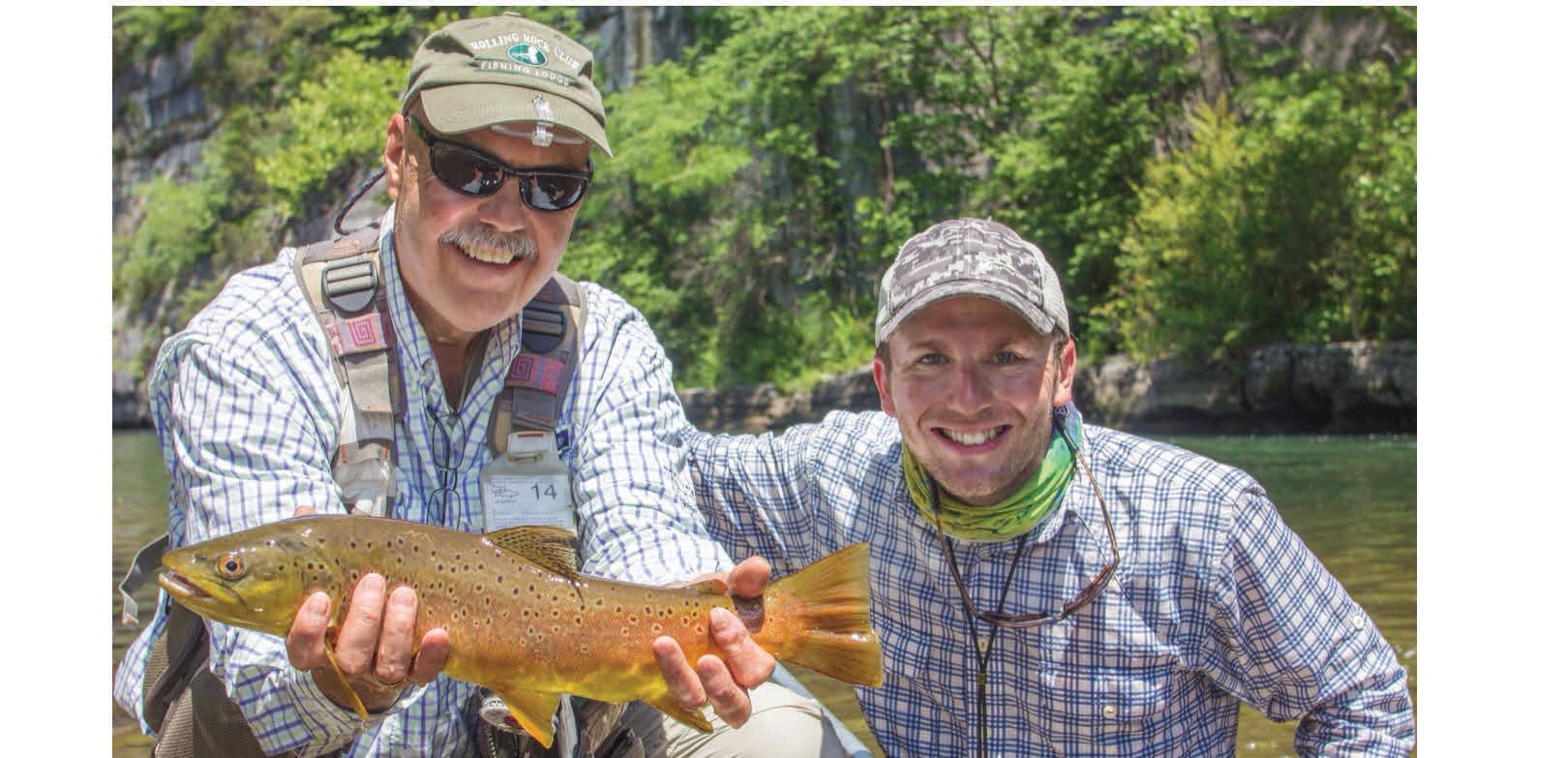




In general, the trend in boating these days is bigger is better. Right? Engine horsepower is getting higher and higher, and boats are being built able to accommodate two, four, even six engines. But what about the other end of the spectrum—anglers and cruisers that are looking for the ultimate in portable propulsion? Whether you are looking for a boost for your kayak or a reliable motor for your in$atable shing boat or tender, the perfect engine should be lightweight, easy to take on and o#, easy to use and provide the range and speed for almost any conditions. It should be selfcontained, so you don’t have to deal with lugging around a fuel tank, or even have to purchase and safely store gasoline on your boat.
Electric propulsion is the way to go, but no one has really gotten the

converters, the eLite can be fully charged in around four hours. For added capability and convenience, the engine includes a USB-C output that allows users to charge and power other electrical devices. At just under three-feet in length and weighing 14.7-pounds including the built-in battery, the eLite stores easily and the one-click quick-release bracket allows for installation and removal in a matter of seconds. For exceptional portability, the tiller handle converts to a perfectly balanced carry handle. With multiple trim and tilt angles, adjustable steering resistance and sha length, and a shallow-water mode, the eLite is completely customizable. Its Smart Battery Monitoring System e%ciently optimizes performance, carefully regulating battery level, temperature, and remaining state-of-charge all displayed on an ultra-simple interface, leading to extended range, a more energy-e%cient operation and longer battery life. Built to last, it is IP67 waterproof, and is constructed of aviationgrade aluminum alloy for lighter weight and greater durability. In addition, the anti-ground auto kick-up feature protects the motor from accidental damage. Available for under $1,000, it is also the most a#ordable electric outboard in its class.
!ere’s no time like today to upgrade to the electric outboard of the future. !e ePropulsion eLite is in stock and ready to take you quietly and sustainably to your next adventure.






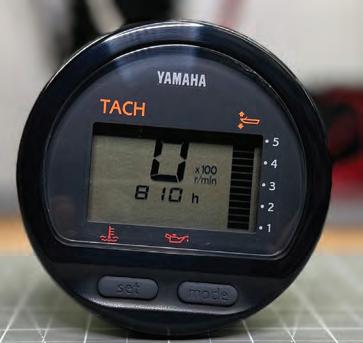



TYLER WOOLCOTT

Most of the time the saying is true, bigger bait equals a bigger sh! Although elephants eat peanuts, a big bait pro le is something sh can’t resist no matter if you are shing the open ocean or the Great Lakes. I have spent a lot of time over the last few years throwing baits bigger than my old “comfort zone” sizes for bass and it is pretty special what gets curious to come look or bite them.
!ere are many di#erent types of swimbaits out on the market, but I’ll break them down into two for this article to keep it simple. You have the hard, gliding-style treble hook swimbaits, or you have so body swimbaits that is more of a steady slow reel and most of the time more weedless. !ey both have an awesome time and place to get thrown and will both attract some very big sh.
Depending on where you are in the country and the size of the forage in your lake, a normal meal for a bass is usually much bigger than you think. A 6- to 8-inch bluegill is something a two or three pound bass would have no issues at all with swallowing and eating it whole. A 10+ pounder, on the other hand, could eat bait sh such as gizzard shad up to 14 inches, which I have personally seen. Trying to exactly duplicate the larger bait sh that are in your lake in a natural presentation is the absolute best way to draw attention from sh to your arti cial lure.
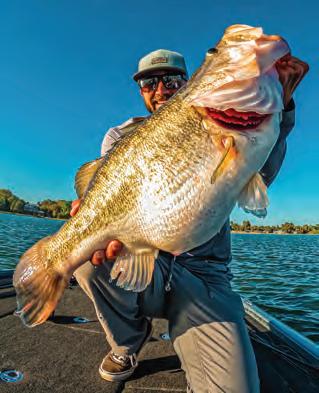
Most of the time when I am throwing a gliding-style hard swimbait, my rst choice is always going to be a shad imitation. A majority of the
places I sh are full of shad and this seems to be a favorite food source for bass when available to them. Another major large food source for big bass that a lot of people forget about are crappie. I have personally witnessed some absolute giant bass in multiple lakes that feed primarily on crappie. When throwing so swimbaits my go-to imitation is typically a bluegill. Usually when I’m throwing a so swimbait I’m wanting to either creep it through grass or along the bottom, which calls for a more weedless rig. Both places bluegill typically live and the bass that feed on them aren’t usually too far away. !ere are many di#erent brands of swimbaits out there, hard and so . When rst starting out I would stick to some of the a#ordable baits that have good reviews by users and are proven to work until you build up your con dence, then start working your way up to bigger and more customized things.
When throwing bigger lures like swimbaits you typically want bigger equipment to throw them. 13 Fishing makes an awesome, very a#ordable 8-foot rod in their Defy series that can handle most swimbaits I throw. Pair this up with a 300 sized reel like the 13 Fishing Concept A3 and some 20-25 lb. Su x Advanced Fluorocarbon and you are ready to go battle with some big sh!
It’s hard to t all the info needed to explain this technique in this article, but I hope it sparks your interest to get out there and throw a big bait. !e best way to learn is to get on the water and give it a try for yourself! I tried it once and now it is one of the coolest and most fun ways I target big bass all year long.
Don’t be afraid to reach out via my website or social media platforms with any questions you may have!
Good luck out there and tight lines!
Tyler Woolcott is a professional tournament angler and guide. Check out his website at www.tylerwoolcott shing.com.

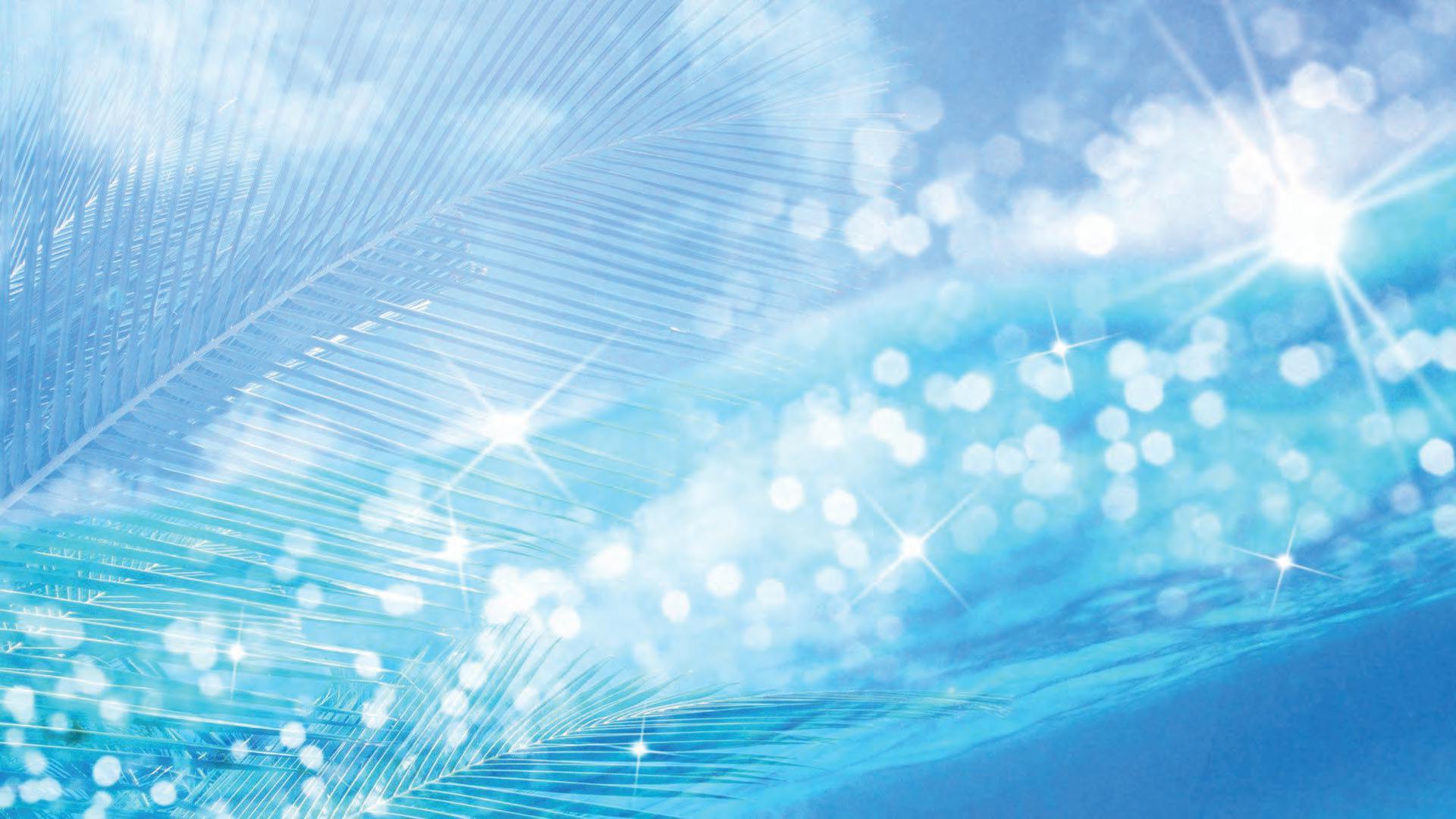
Weighing just 30 pounds, the portable and versatile DF 2.5HP outboard motor is the lightest Suzuki 4-stroke motor ever built. This smooth and quiet engine is water-cooled for increased dependability, features a digital CDI, and its anti corrosion system ensures the aluminum propeller stays durable in marine conditions. Steering and throttle tension and control are easily adjustable. Simple steering action for maneuvering in tight quarters. Easy-to-grip carrying handle conveniently tilts the motor up when needed. Meets the rigorous EPA 2010 and CARB 3-Star Ultra-Low emissions standards.

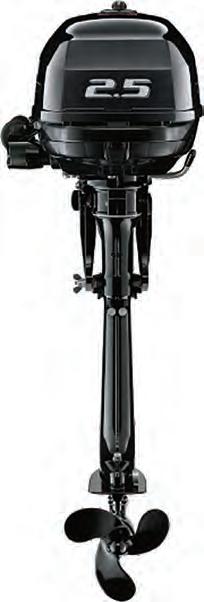

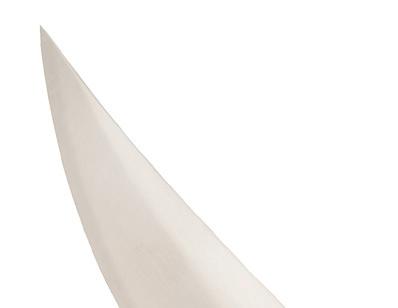
Three knives. ONE amazing price! Originally $249. Limited time special offer ONLY $69!
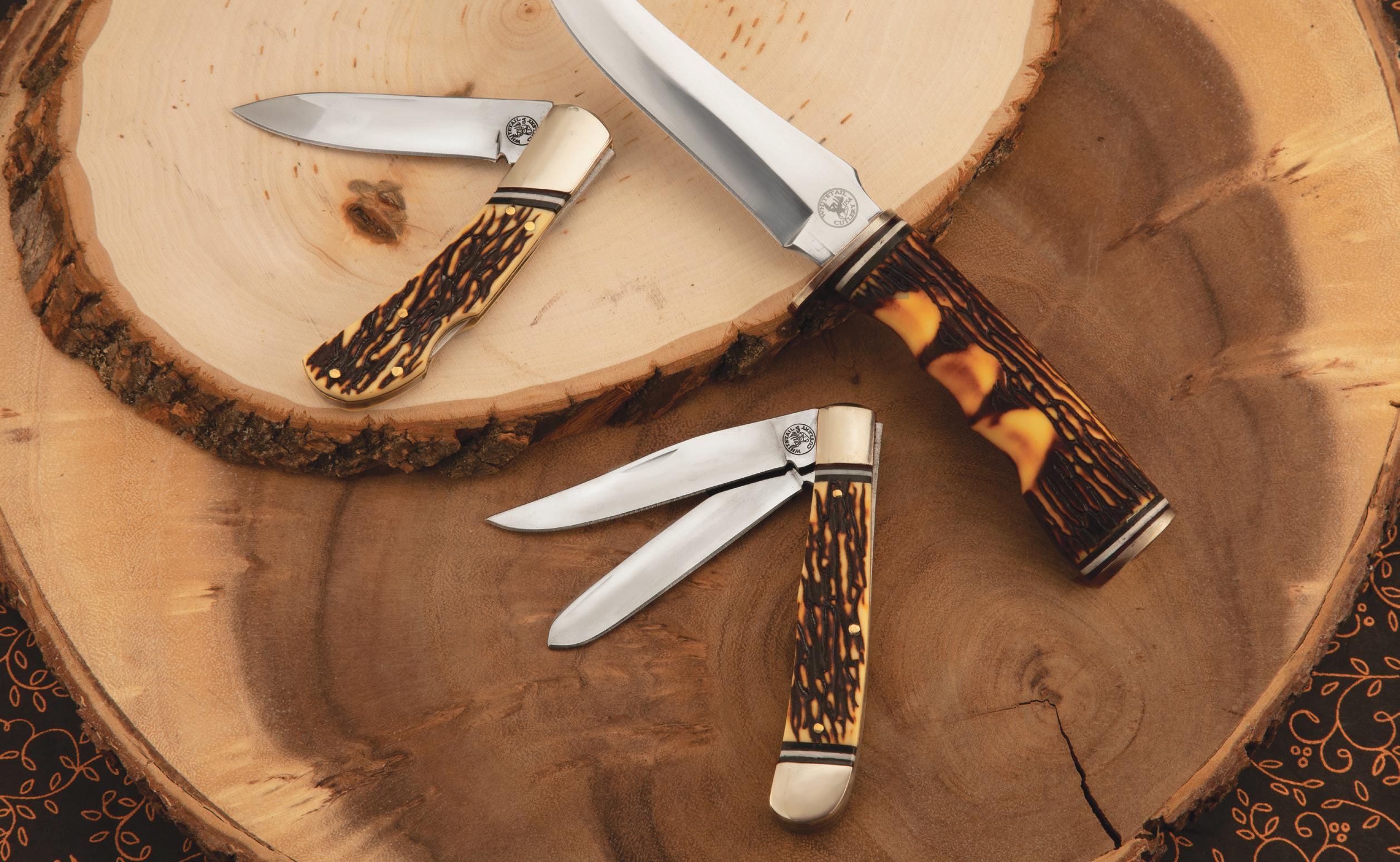
When you use your INSIDER OFFER CODE


— D., Houston, Texas TAKE 72% OFF INSTANTLY!
Looking for a knife that’s a cut above? We can do you two better. The Triple Play Knife Collection gives you three different styles of hunting blades for one unbelievably amazing price of just $69. Because serious hunters know that sometimes one knife isn’t enough, and so do serious collectors. All three blades in the Triple Play Knife Collection are made with genuine 440A stainless steel and measure an impressive 52-58 on the Rockwell scale for hardness. There’s the reliable lockback blade, designed to open up and never let you down. The two-blade trapper knife, engineered for those who trap small game, and a solid, simple, fine fixed blade measuring 9" in overall length, and the antler-textured handles on every knife complete the expert hunter look.


With all three blades along with a decorative display box priced at just $69, this is some big collectible prey worth hunting down. This deal truly is a cut above.

Satisfaction Guaranteed or Your Money Back. Try out the Triple Play Knife Collection for 30 days. If it doesn't make the cut, send it back for a full refund of the item price. Limited Reserves. We only have 850 available for this ad only at this incredible price. Call today!
What customers are saying about Stauer knives...
“First off, the shipping was fast and the quality is beyond what I paid for the knife. Overall I am a satisfied customer!”
Triple Play Knife Collection $249* Offer Code Price Only $69 + S&P Save $180
Your Insider Offer Code: TPK238-01
You must use the insider offer code to get our special price.

14091 Southcross Drive W., Dept. TPK238-01
Burnsville, Minnesota 55337 www.stauer.com
*Discount is only for customers who use the offer code versus the listed original Stauer.com price.
Rating of A+ California residents, please call 1-800-333-2045 regarding Proposition 65 regulations before purchasing this product.

• 3-piece set: 9" overall fixed knife with 5" blade; 4 ¹⁄8" trapper knife with two 3 ³⁄8" blades; 4" overall lockback knife with 3" blade • Stainless steel blades with antler patterned resin handle • Comes in decorative display box
Stauer… Afford the Extraordinary .®
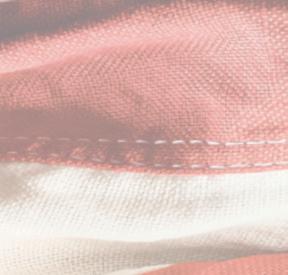










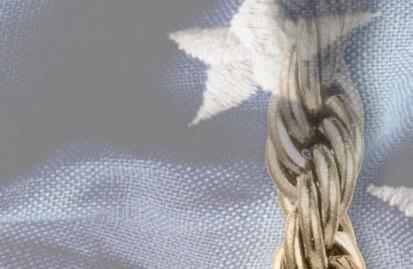




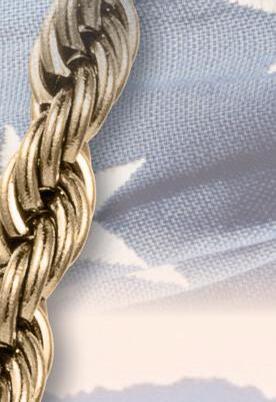




Troughout history, the eagle and the anchor have stood as enduring symbols of power and resolve. Te eagle, with its mighty wings and piercing gaze, has long been a representation of freedom and bravery, soaring high above, ever watchful and unyielding. Te anchor, frmly rooted, embodies stability and steadfastness, grounding even the fercest storms. Together, these two symbols have come to represent those who serve with honor - those who rise to meet any challenge, yet remain rooted in integrity.








Inspired by this profound symbolism, the Wings of Honor pendant brings together the soaring spirit of the eagle and the enduring strength of the anchor in one stunning design. Crafed from premium stainless steel and fnished with a luxurious 18k gold coating, this pendant is not just a piece of jewelry - it’s a tribute to the values that have defned generations of heroes.










Te Wings of Honor pendant is a statement piece that speaks to the legacy of all who wear it. Whether as a gif for yourself or for someone whose story is woven with honor and valor, this pendant carries a deep sense of pride.




And now, this remarkable symbol of strength can be yours for an incredible price - just $39 plus S&H. By using the special code CA5WHP, you can secure this timeless piece, saving you more than you’d expect for such crafsmanship.
A lasting reminder of bravery and commitment, the Wings of Honor pendant connects the wearer to the rich heritage of those who stand for both freedom and stability. It is more than an accessory - it’s a refection of the values we hold close, ready to be passed from one generation to the next. Claim yours today, and wear your story with pride.










Wings of Honor Gold & Steel Pendant - $149 $39 - Save $110








$39 Special Offer






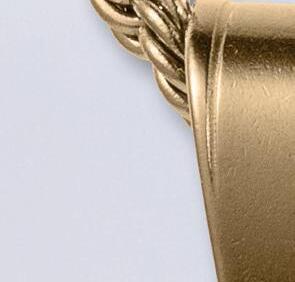
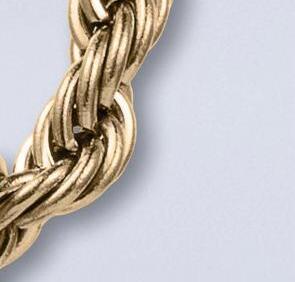










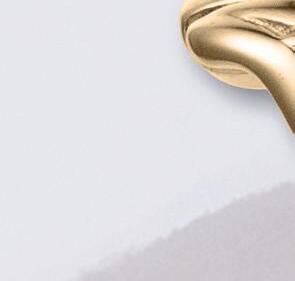
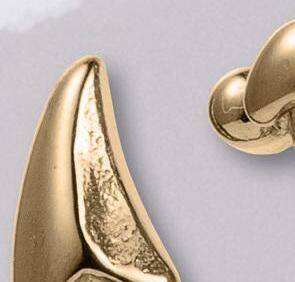
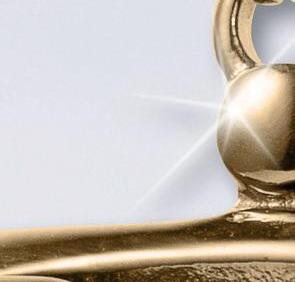


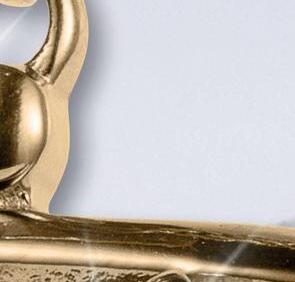
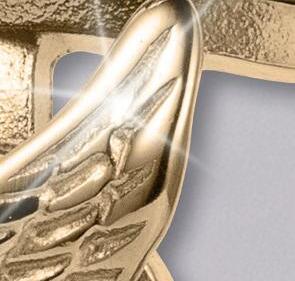







* Exclusive Ofer Price Using Discount Code Pendant & 24” 18k Gold Plated Rope Chain - $278 $59 - Save $219





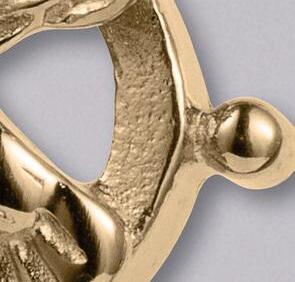

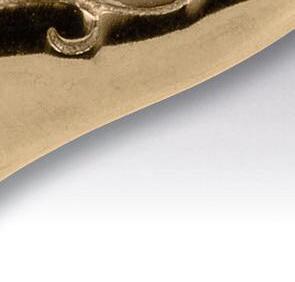




“No bird soars too high if he soars with his own wings”
- William Blake, English poet



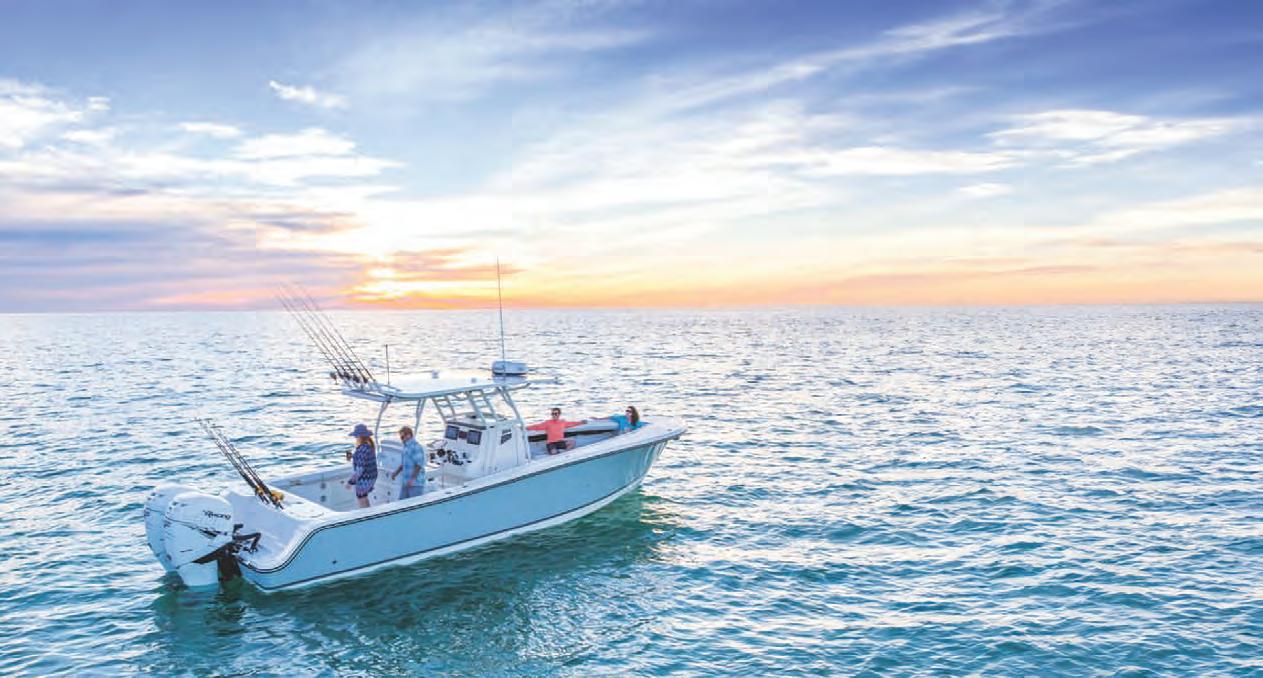


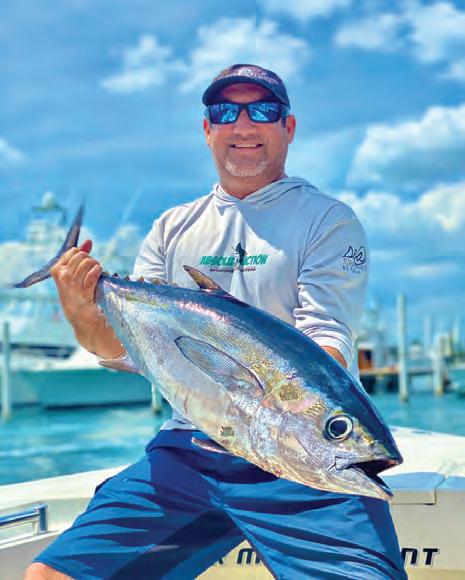





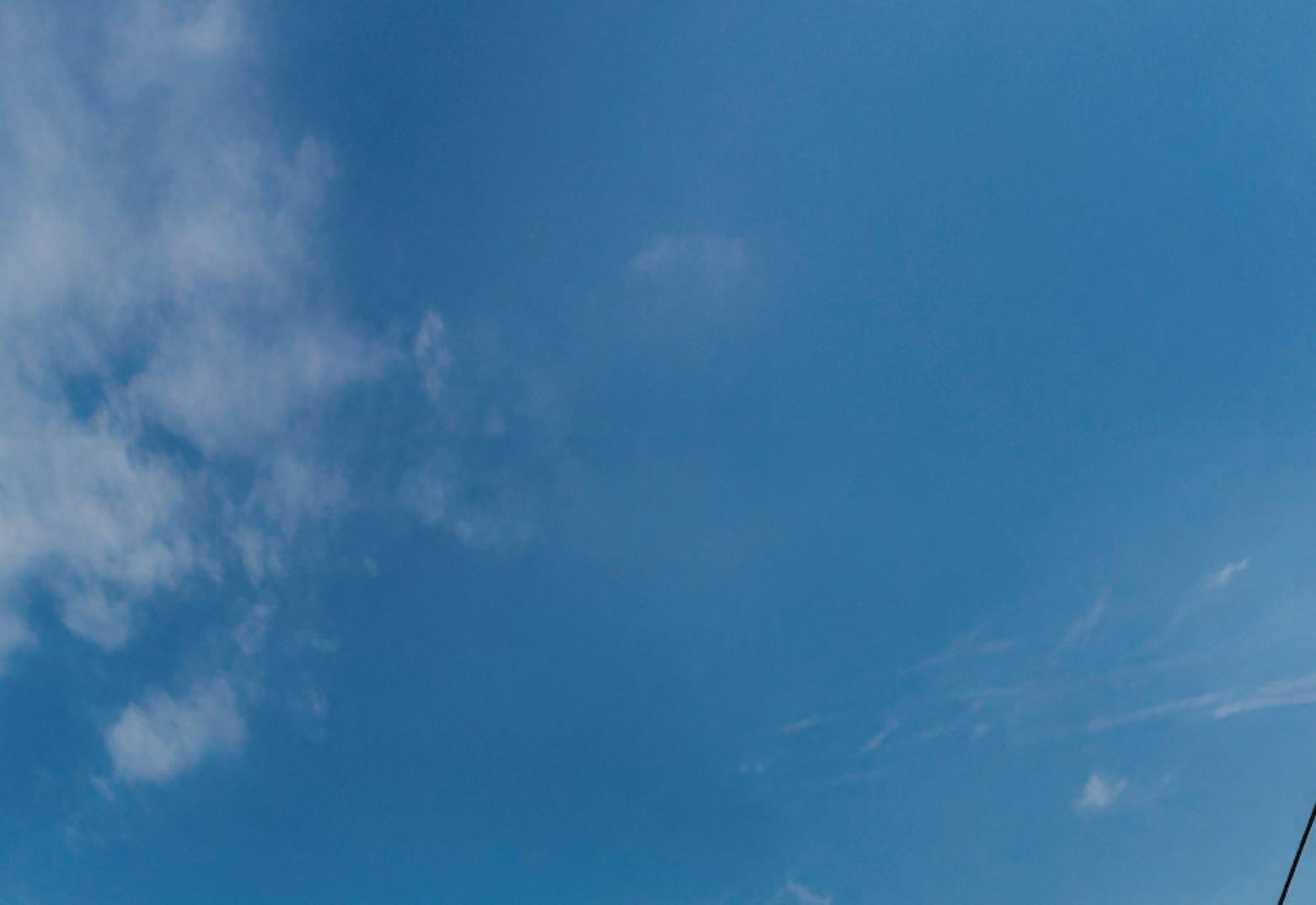

Whether you’re fishing from a paddleboard, kayak, canoe or small boat, the ePropulsion eLite 500W redefines your on-water experience with innovative features and commitment to sustainability. Designed to be the most compact and lightweight electric outboard in its class, the eLite is an easy-to-use alternative to small internal combustion engines for enthusiasts worldwide. Max 5.6 miles at half throttle and 3.5 miles at full throttle.
